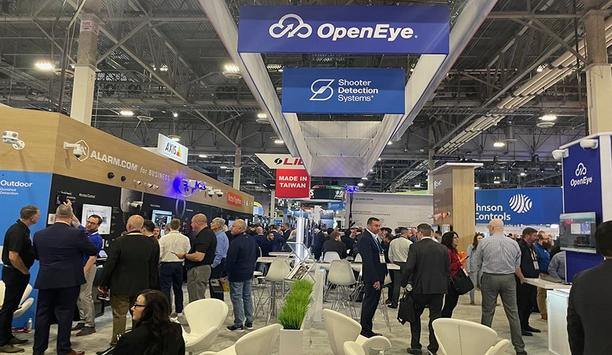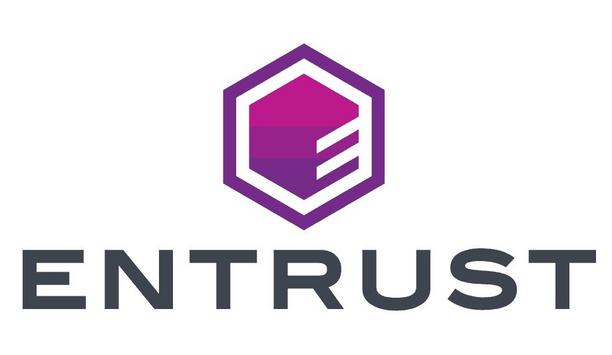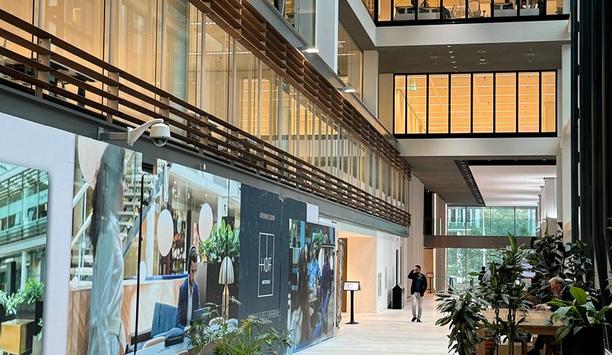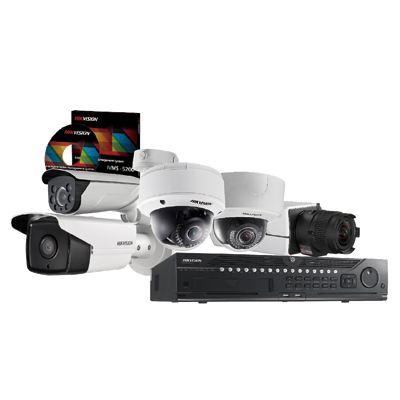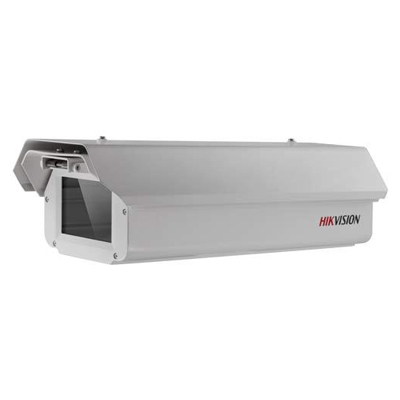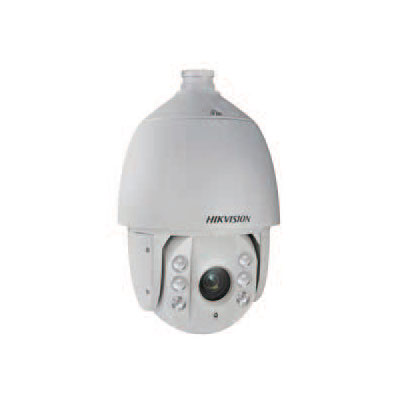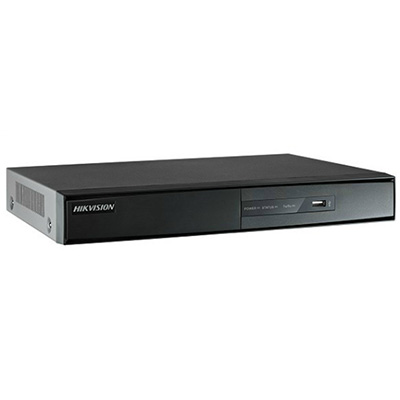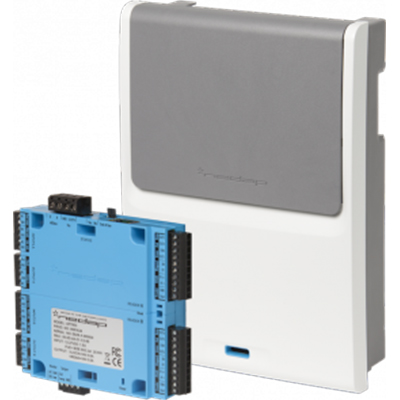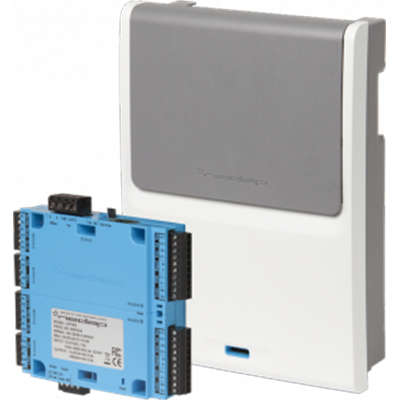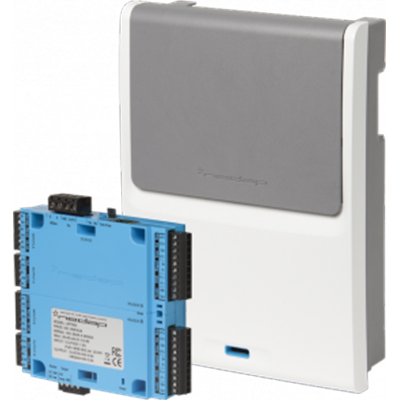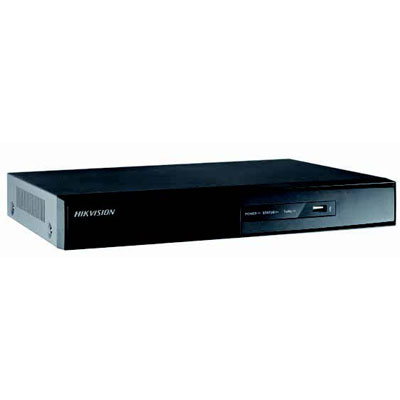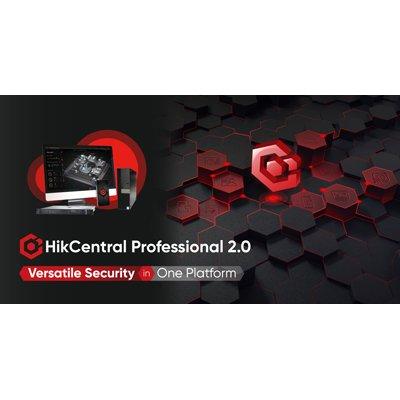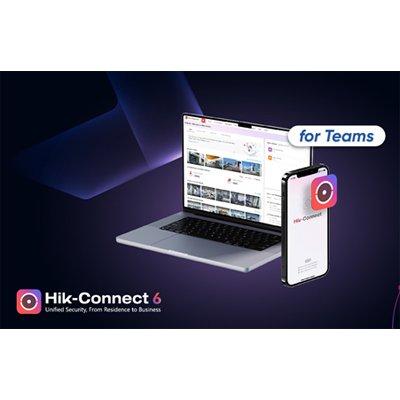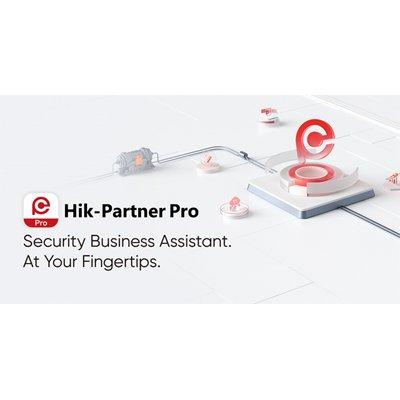Security management
Kaseya, the pioneering provider of AI-powered cybersecurity and IT management software, has announced its Spring 2025 release with new features that equips MSPs and internal IT teams with new capabilities to automate workflows, enhance the end-user experience, and strengthen security posture ahead of Kaseya Connect, where the company will debut the latest evolution of Kaseya 365. “Innovation is not just part of our roadmap — it’s embedded in our DNA,” said Jim Lippie, Ch...
Anyone who has been in a proverbial cave for the last couple of years faced a language barrier at this year’s ISC West 2025 trade show. The industry’s latest wave of innovation has brought with it a new bounty of jargon and buzzwords, some of which I heard at ISC West for the first time. As a public service, we are happy to provide the following partial glossary to promote better understanding of the newer terms. (Some are new to the security industry but have been around in the IT...
Bugcrowd, the pioneer in crowdsourced security, announced an alliance with GlobalDots, the cloud innovation and security specialist. Under the agreement, Germany-based GlobalDots will integrate Bugcrowd’s crowdsourced security platform into its portfolio of cloud infrastructure, CDN, DevOps, and AI solutions. Bugcrowd’s AI-powered platform The alliance will make Bugcrowd’s AI-powered crowdsourcing platform available to GlobalDots’ 350-plus international client base, wh...
Entrust, the pioneer in identity-centric security solutions, announced the Entrust Cryptographic Security Platform, the industry’s first unified, end-to-end cryptographic security management solution for keys, secrets, and certificates. Cyberattacks on data security and identity systems are exploding in scale and sophistication. Securing data and identities Traditional approaches to securing data and identities aren't working, and in digital-first environments, every connected dev...
Camden Door Controls is proud to announce the launch of its new 1420 Series Low-Profile Fire-Rated Strike, designed to provide a cost-effective solution for code compliance in UL fire-rated doors and frames with cylindrical locksets. Built to the highest industry standards, the CX-ED1420 strikes are Grade 1 ANSI fire-rated and engineered for 1/2” to 5/8” latch projection. CX-ED1420 Series features They offer exceptional durability with 1,500 lbs static strength and are factory-tes...
Hikvision has collaborated with the French software developer, FWA. The partnership has enabled FWA to integrate Hikvision’s automatic number plate recognition (ANPR) licence plate detection technology into its DuckTheLine logistics queue management solution. DuckTheLine enables site managers to schedule when trucks should arrive, and to optimise their progress through the facility whilst they are on-site. Process of loading and unloading The alliance with Hikvision enables FWA to autom...
News
Smiths Detection, a pioneer in threat detection and security screening technologies, and a business of Smiths Group plc, announces it is to supply SDX 6040 X-ray inspection systems to a number of major cruise lines. With thousands of people and large quantities of cargo coming onboard, screening systems are vital in helping detect weapons, explosives, drugs, and other prohibited items hidden in luggage or supplies. SDX 6040’s portable and flexible design SDX 6040’s portable and flexible design makes it the perfect solution for cruise line operators The SDX 6040 offers the best image quality on the market, with unmatched clarity in detection that enables operators to quickly screen bags, ensuring that boarding the ship is safe and seamless for passengers. The SDX 6040’s portable and flexible design makes it the perfect solution for cruise line operators seeking a mobile X-ray inspection system that delivers high protection and operational efficiency. Its compact footprint means it can be easily manoeuvred onboard and conveniently stored within the vessel. Complicated installations and concerns It can also fit through a standard door, eliminating the need for complicated installations and concerns about fitting into tight spaces. The system’s smart image display features, including organic stripping and enhancement modes, provide superior discrimination between organic and inorganic materials, critical for the precise detection of explosives, drugs, and other contraband -- while its high throughput capability ensures that large volumes of luggage can be screened quickly and efficiently, minimising delays and maintaining smooth operations. SDX 6040’s advanced detection system SDX 6040’s advanced detection system provides a full 100% view of every item, eliminating blind spots The SDX 6040’s advanced detection system provides a complete 100% view of every item, eliminating blind spots and significantly enhancing security. Additionally, the scanner integrates seamlessly with iCMORE AI technology, offering automated threat detection for a wide array of prohibited items, including currency, weapons, lithium batteries, and other hazardous goods. The system's algorithms can be updated as new threats emerge, ensuring it meets the evolving needs of the cruise industry. Levels of safety and assurance Matthias Springer, VP of Sales at Smiths Detection Inc., said of the sales: “At Smiths Detection, we serve customers in a wide range of market sectors, with a significant focus on cruise lines. The SDX 6040 is revolutionising maritime security, providing our customers with the highest levels of safety and assurance while maintaining efficient throughput of passengers." He adds, "With superior image quality, portability, and flexibility, it is an ideal solution for the dynamic environments of cruise ships."
As organisations navigate an increasingly complex threat landscape, security pioneers are making strategic shifts toward unified platforms and emerging technologies, according to the newly released 2025 State of Security and Identity Report from HID. The comprehensive study gathered responses from 1,800 partners, end users, and security and IT personnel worldwide, and reveals a significant transformation in how businesses are approaching security, with mobile credentials and artificial intelligence emerging as key drivers of innovation. Integration of modern technology "The security industry is at a pivotal moment where the integration of modern technology with existing infrastructure is no longer optional—it's imperative," said Ramesh Songukrishnasamy, Sr. VP of Engineering at HID. "The fact that 73% of security pioneers now prioritise software-driven unified solutions shows we've moved beyond traditional siloed approaches. Organisations are demanding platforms that can scale with their needs while providing actionable intelligence." Key findings from the report A marked increase in mobile credentials and biometrics adoption, signalling a shift away from traditional access methods The rapid rise of mobile credentials, with 61% of security pioneers identifying their proliferation as a top trend, signals a significant shift away from traditional access methods. Nearly two-thirds are either deploying or planning to deploy mobile solutions. Concurrently, demand for biometric technologies such as fingerprint, iris, and facial recognition is on the rise: about 35% of respondents currently use biometric technology, while 13% plan to, indicating significant growth potential in this segment. Growing demand for unified security management solutions that streamline operations As organisations diversify security technology now, many security pioneers (67%) are making moves to adopt software-driven security solutions, citing that unifying multiple data collection methodologies would be “somewhat” or “very important” (73%) to their organisation. Strong preference for open platforms that facilitate seamless integration Interoperability has become synonymous with progress across the security industry over the last few years, and the trend continues as more than half of security professionals reported open solutions as being “extremely” or “very” important to their organisations. Strategic focus on converging platform solutions rather than standalone products Nearly two thirds of organisations and 73% of integrators and consultants report a shift toward software-driven security solutions that bridge physical and digital functions like video surveillance, access control, and intrusion detection into a more unified platform. Significant channel transformation driven by digital innovation The security channel is undergoing significant transformation driven by digital innovation. While 77% of channel partners believe they are adapting well to these changes, growing end-user demand for AI, cloud solutions, IoT integration, and advanced analytics is reshaping service expectations. To thrive, the channel must continuously evolve and adapt to meet the evolving needs of the market and keep pace with digital transformation within the security sector. Accelerated adoption of AI agents to enhance security operations AI agents are being rapidly adopted to enhance security operations. Use cases are proliferating across access control, identity management, video, and security management platforms. Key benefits cited include improved efficiency and speed of security processes (50%) and enhanced real-time data analysis capabilities (47%). Continued emphasis on sustainability in security decision-making, budget allowing Sustainability is still a key factor in security decision-making, with 75% of security pioneers now factoring it into their solution selection process. However, sustainability is not the most critical factor when selecting new solutions as security and cost-effectiveness are still the highest priority for 80% of integrators and consultants.
Radiant Security launches the industry’s first Adaptive AI Security Operations Centre (SOC) platform. The announcement marks a major step for cybersecurity automation in a landscape flooded with alert fatigue, static playbooks, and analyst burnout. Now, security analyst teams can instantly and transparently triage, investigate, and remediate 100% of alerts from any source, at machine speed. Proactive defence strategies Radiant eliminates false-positive noise, escalating only suspicious alerts to human analysts for further review. This approach ensures that real threats are never missed, enabling analysts to focus on proactive defence strategies and significantly reducing the mean time to respond (MTTR) from days to minutes. Agentic AI SOC solutions Radiant provides dynamic, transparent remediation recommendations that analysts can review Unlike other “Agentic AI SOC” solutions limited to a narrow set of pre-trained use cases, Radiant is fully agnostic and requires no training. Built on continuous security research, its AI engine dynamically adapts to any alert type from any security source, delivering full-spectrum coverage across the entire threat landscape. When a real threat is escalated, Radiant provides dynamic, transparent remediation recommendations that analysts can review, customise, and execute with a single click. This eliminates the constraints of static automation and rule-based SOARs, empowering human analysts with speed, precision, and complete control. Real AI outcomes “This launch comes at a time when the industry needs real AI outcomes - not more detections, AI bolt-ons and noise,” said Shahar Ben-Hador, CEO and Co-founder of Radiant Security. “The one thing we kept hearing from our customers was the need for complete alert coverage. So, rather than pre-training our AI engine to support more use cases, we designed it to train itself. It dynamically researches every alert it receives, triages, and investigates as a top analyst would, adapting to the environment to achieve the most accurate results.” Augmenting human analysts Radiant enables SOC teams to shift their focus from investigating 1000s of false positives to proactive security By augmenting human analysts with intelligent triage and response capabilities, Radiant enables SOC teams to shift their focus from investigating 1000s of false positives to proactive and strategic security. Radiant’s AI dynamically manages any alert from any security vendor, ensuring seamless, automated incident management across the security stack. Analysts only need to review verified threats, and, backed by adaptive AI logic, can focus on their mission-critical security challenges. Affordable log management and predictable pricing The Radiant platform also provides powerful log management and analysis capabilities at a fraction of the cost of traditional SIEMs. This enables rapid, cost-effective querying directly from the customer’s archive storage (such as an Amazon S3 bucket), helping to deliver more effective compliance and deep forensic investigation. For users, this drives operational efficiency by eliminating high costs and vendor lock-in associated with legacy SIEM solutions. Radiant’s pricing Radiant’s pricing is determined solely by the number of use cases and end users In contrast to other solutions on the market that charge based on unpredictable alert volumes, Radiant’s pricing is determined solely by the number of use cases and end users. This pricing model ensures 100% predictability for both alerts and log volumes. “Security teams shouldn’t have to choose between visibility and affordability. With Radiant’s integrated data lake, we’ve eliminated the traditional log management cost, giving customers unlimited retention, lightning-fast search, and full flexibility at a fraction of the cost,” Katie Mulligan, Head of Product of Radiant Security, explained. Radiant Security at RSA 2025 Mulligan added, “The way Radiant ingests and stores security data not only dramatically improves the organisation’s security posture, but also allows them to scale without breaking their budget”. Radiant Security will demonstrate its Adaptive AI SOC platform at RSA 2025 (Apr 28 - May 1), Booth #258.
Genetec Inc., the pioneer in enterprise physical security software, has announced the dates for its annual empower360 roadshow. Scheduled to take place in Dubai, United Arab Emirates (UAE), on 17 April 2025, the partner-focused event will bring together industry professionals to explore the evolving role of physical security in the country. Adaptable deployment models According to the Genetec State of Physical Security Report 2025, 66% of physical security consultants and channel partners plan to recommend hybrid deployments in the next five years, reflecting a growing demand for adaptable deployment models in the industry. The report indicates that decision-makers across the UAE will prioritise hybrid systems this year, focusing on centralised monitoring and modernising video or access control systems without discarding existing investments. Genetec empower360 roadshow Attendees will have the opportunity to engage with Genetec experts, participate in interactive sessions The Genetec empower360 roadshow will delve into the importance of open architecture, unification, and the integration of Internet of Things (IoT) technologies in developing smarter, safer cities. It will look at new trends in access control technology and will cover best practices for migrating from legacy systems to more advanced, secure, and scalable solutions. Additionally, the event will address simplifying video management, focusing on strategies and approaches to enhancing public safety and urban management in the UAE. Attendees will have the opportunity to engage with Genetec experts, participate in interactive sessions, and network with industry peers. Evolving role of physical security "The evolving role of physical security is reshaping how organisations secure both their people and digital networks. In the UAE, we are seeing an increasing reliance on unified security solutions and a growing emphasis on adapting security strategies to effectively navigate the realities of a changing industry,” said Firas Jadalla, Regional Director – Middle East, Turkey & Africa, Genetec Inc. “With IT at the forefront of implementing these shifts, physical security operations are becoming more resilient, data-driven, and adaptable to growing threats. The empower360 roadshow seeks to equip physical security professionals with the knowledge and tools necessary to support the rapidly advancing security landscape."
AvePoint, the pioneer in data security, governance and resilience, announced the launch of its Risk Posture Command Centre within the AvePoint Confidence Platform, a single pane of glass to help organisations enhance their data security posture management (DSPM) with faster decision making and proactive risk mitigation. The Risk Posture Command Centre adds to AvePoint’s growing repertoire of Command Centres available in the AvePoint Confidence Platform, all designed to provide business and IT pioneers with the insights and recommended actions necessary to understand, manage, and mitigate potential vulnerabilities across their digital ecosystem. Data security needs with objectives Organisations persist in struggling with views of their data terrain, navigating multiple dashboards Organisations continue to struggle with fragmented views of their data landscape, navigating multiple dashboards and third-party tools to obtain critical components of DSPM, including data security, cloud backup, policy management, insights, and operational intelligence. 86% of organisations cannot balance their data security needs with business objectives, and when it comes to using AI, 47% of IT pioneers are either not very confident or have no confidence at all in their organisation’s ability to manage security and access risks. Data protection and security AvePoint's Risk Posture Command Centre eliminates this complexity, offering an intuitive interface that not only delivers immediate visibility into an organisation’s risk posture, but also provides actionable recommendations. This powerful combination enables organisations to quickly understand their data landscape and take precise, informed actions to enhance data protection and security within the AvePoint Confidence Platform. AvePoint Risk Posture Command Centre “For years, AvePoint has built engines to help our customers improve their risk postures, but now, with the AvePoint Risk Posture Command Centre, we’re making that easier to see and act upon, within one single pane of glass,” said John Peluso, Chief Technology Officer, AvePoint. “As data complexity threatens to overwhelm even the most sophisticated teams, we're providing a clear path forward, transforming potential data sprawl into a strategic advantage that drives innovation, reduces risk, and unlocks agility for every organisation.” The AvePoint Risk Posture Command Centre arms organisations with: Early Threat Detection: Comprehensive ransomware detection capabilities. Protection at a Glance: A unified view of data protection status, with a centralised dashboard displaying backup health and identifying potential data oversharing risks. Compliance Confidence: Insights into potential compliance vulnerabilities. Data Intelligence in Action: A visual representation of the data landscape, to offer actionable intelligence for risk mitigation and next steps for enhanced data protection and security. Generated Recommended Insights: Information to take immediate action on vulnerabilities and security risks. Security and success of AI investments AI Confidence Command Centre was AvePoint’s first Command Centre, helping corps assess the security Released earlier this year, the AI Confidence Command Centre was AvePoint’s first Command Centre, helping organisations assess the security and success of their AI investments. Its features allow organisations to evaluate their overall adoption performance of Microsoft 365 Copilot and understand change management success from enablement to adoption, while also noting potential risk factors. AvePoint's board-level strategy “AvePoint's Command Centres are more than a technology solution – they are a strategic transformation engine. By breaking down the traditional silos between technical teams and business leadership, these dashboards create a universal language of data intelligence,” said John Hodges, Chief Product Officer, AvePoint. “What was once confined to IT departments can now drive board-level strategy, turning raw data into a powerful narrative of organisational health, risk management, and future potential.”
Advanced Data Risk Management (ADRM) is thrilled to announce that its innovative DEFENDER Security Management Platform has been awarded the prestigious 2025 Security Industry Association (SIA) New Products Solution Award for Best in Managed Services. This recognition underscores DEFENDER’s position as a pioneering solution in the security industry. Incredible ADRM team “We extend our heartfelt thanks to the judges and the SIA for acknowledging DEFENDER as an industry trailblazer,” said Dan O’Neill, President and CEO of ADRM. “This accolade reflects our commitment to simplifying security management and empowering organisations to safeguard their critical assets more effectively. I'm proud of the incredible ADRM team whose dedication and creativity brought DEFENDER to life.” New standard for integrated security system management DEFENDER platform was commercially launched on February 4, 2025, and it sets a new standard The DEFENDER platform was commercially launched on February 4, 2025, and it sets a new standard for integrated security system management. DEFENDER provides a single-pane-of-glass view into various systems, including access control, video management, key control, and visitor management. Features such as real-time alerts, intuitive dashboards, and comprehensive reporting redefine the managed services landscape by automating essential processes and addressing significant gaps in traditional managed services provider offerings. Corporate security environments “Today’s corporate security environments are highly complex, and a single oversight can compromise an entire system,” said Matt Isgur, CTO of ADRM. “By providing real-time insights and proactive alerts, DEFENDER minimises downtime and protects against critical failures. It significantly reduces vulnerabilities and liability for our clients.” Key innovations of the DEFENDER platform Key innovations of the DEFENDER platform include proactive monitoring of system health Key innovations of the DEFENDER platform include proactive monitoring of system health, licence management, and integration with daily CISA reports to identify cyber vulnerabilities. This approach ensures that organisations are well-informed and prepared to act promptly to maintain system integrity. “SIA congratulates the winners of the 2025 SIA NPS Awards,” said SIA CEO Don Erickson. “Each year, NPS presents the most cutting-edge products available on the market today, and our judges’ dedication, support and thorough consideration are invaluable in maintaining it as the most trusted awards program for launching new security technology solutions.” ADRM emerging challenges and client needs The DEFENDER platform is available as a Software as a Service (SaaS) subscription, offering a scalable and cost-effective solution for organisations of all sizes. With its agile, modular foundation, DEFENDER allows ADRM to rapidly adapt and respond to emerging challenges and client needs, further solidifying its position as an industry pioneer.
Smiths Detection, a pioneer in threat detection and security screening technologies, and a business of Smiths Group plc, announces it is to supply SDX 6040 X-ray inspection systems to a number of major cruise lines. With thousands of people and large quantities of cargo coming onboard, screening systems are vital in helping detect weapons, explosives, drugs, and other prohibited items hidden in luggage or supplies. SDX 6040’s portable and flexible design SDX 6040’s portable and flexible design makes it the perfect solution for cruise line operators The SDX 6040 offers the best image quality on the market, with unmatched clarity in detection that enables operators to quickly screen bags, ensuring that boarding the ship is safe and seamless for passengers. The SDX 6040’s portable and flexible design makes it the perfect solution for cruise line operators seeking a mobile X-ray inspection system that delivers high protection and operational efficiency. Its compact footprint means it can be easily manoeuvred onboard and conveniently stored within the vessel. Complicated installations and concerns It can also fit through a standard door, eliminating the need for complicated installations and concerns about fitting into tight spaces. The system’s smart image display features, including organic stripping and enhancement modes, provide superior discrimination between organic and inorganic materials, critical for the precise detection of explosives, drugs, and other contraband -- while its high throughput capability ensures that large volumes of luggage can be screened quickly and efficiently, minimising delays and maintaining smooth operations. SDX 6040’s advanced detection system SDX 6040’s advanced detection system provides a full 100% view of every item, eliminating blind spots The SDX 6040’s advanced detection system provides a complete 100% view of every item, eliminating blind spots and significantly enhancing security. Additionally, the scanner integrates seamlessly with iCMORE AI technology, offering automated threat detection for a wide array of prohibited items, including currency, weapons, lithium batteries, and other hazardous goods. The system's algorithms can be updated as new threats emerge, ensuring it meets the evolving needs of the cruise industry. Levels of safety and assurance Matthias Springer, VP of Sales at Smiths Detection Inc., said of the sales: “At Smiths Detection, we serve customers in a wide range of market sectors, with a significant focus on cruise lines. The SDX 6040 is revolutionising maritime security, providing our customers with the highest levels of safety and assurance while maintaining efficient throughput of passengers." He adds, "With superior image quality, portability, and flexibility, it is an ideal solution for the dynamic environments of cruise ships."
As organisations navigate an increasingly complex threat landscape, security pioneers are making strategic shifts toward unified platforms and emerging technologies, according to the newly released 2025 State of Security and Identity Report from HID. The comprehensive study gathered responses from 1,800 partners, end users, and security and IT personnel worldwide, and reveals a significant transformation in how businesses are approaching security, with mobile credentials and artificial intelligence emerging as key drivers of innovation. Integration of modern technology "The security industry is at a pivotal moment where the integration of modern technology with existing infrastructure is no longer optional—it's imperative," said Ramesh Songukrishnasamy, Sr. VP of Engineering at HID. "The fact that 73% of security pioneers now prioritise software-driven unified solutions shows we've moved beyond traditional siloed approaches. Organisations are demanding platforms that can scale with their needs while providing actionable intelligence." Key findings from the report A marked increase in mobile credentials and biometrics adoption, signalling a shift away from traditional access methods The rapid rise of mobile credentials, with 61% of security pioneers identifying their proliferation as a top trend, signals a significant shift away from traditional access methods. Nearly two-thirds are either deploying or planning to deploy mobile solutions. Concurrently, demand for biometric technologies such as fingerprint, iris, and facial recognition is on the rise: about 35% of respondents currently use biometric technology, while 13% plan to, indicating significant growth potential in this segment. Growing demand for unified security management solutions that streamline operations As organisations diversify security technology now, many security pioneers (67%) are making moves to adopt software-driven security solutions, citing that unifying multiple data collection methodologies would be “somewhat” or “very important” (73%) to their organisation. Strong preference for open platforms that facilitate seamless integration Interoperability has become synonymous with progress across the security industry over the last few years, and the trend continues as more than half of security professionals reported open solutions as being “extremely” or “very” important to their organisations. Strategic focus on converging platform solutions rather than standalone products Nearly two thirds of organisations and 73% of integrators and consultants report a shift toward software-driven security solutions that bridge physical and digital functions like video surveillance, access control, and intrusion detection into a more unified platform. Significant channel transformation driven by digital innovation The security channel is undergoing significant transformation driven by digital innovation. While 77% of channel partners believe they are adapting well to these changes, growing end-user demand for AI, cloud solutions, IoT integration, and advanced analytics is reshaping service expectations. To thrive, the channel must continuously evolve and adapt to meet the evolving needs of the market and keep pace with digital transformation within the security sector. Accelerated adoption of AI agents to enhance security operations AI agents are being rapidly adopted to enhance security operations. Use cases are proliferating across access control, identity management, video, and security management platforms. Key benefits cited include improved efficiency and speed of security processes (50%) and enhanced real-time data analysis capabilities (47%). Continued emphasis on sustainability in security decision-making, budget allowing Sustainability is still a key factor in security decision-making, with 75% of security pioneers now factoring it into their solution selection process. However, sustainability is not the most critical factor when selecting new solutions as security and cost-effectiveness are still the highest priority for 80% of integrators and consultants.
Radiant Security launches the industry’s first Adaptive AI Security Operations Centre (SOC) platform. The announcement marks a major step for cybersecurity automation in a landscape flooded with alert fatigue, static playbooks, and analyst burnout. Now, security analyst teams can instantly and transparently triage, investigate, and remediate 100% of alerts from any source, at machine speed. Proactive defence strategies Radiant eliminates false-positive noise, escalating only suspicious alerts to human analysts for further review. This approach ensures that real threats are never missed, enabling analysts to focus on proactive defence strategies and significantly reducing the mean time to respond (MTTR) from days to minutes. Agentic AI SOC solutions Radiant provides dynamic, transparent remediation recommendations that analysts can review Unlike other “Agentic AI SOC” solutions limited to a narrow set of pre-trained use cases, Radiant is fully agnostic and requires no training. Built on continuous security research, its AI engine dynamically adapts to any alert type from any security source, delivering full-spectrum coverage across the entire threat landscape. When a real threat is escalated, Radiant provides dynamic, transparent remediation recommendations that analysts can review, customise, and execute with a single click. This eliminates the constraints of static automation and rule-based SOARs, empowering human analysts with speed, precision, and complete control. Real AI outcomes “This launch comes at a time when the industry needs real AI outcomes - not more detections, AI bolt-ons and noise,” said Shahar Ben-Hador, CEO and Co-founder of Radiant Security. “The one thing we kept hearing from our customers was the need for complete alert coverage. So, rather than pre-training our AI engine to support more use cases, we designed it to train itself. It dynamically researches every alert it receives, triages, and investigates as a top analyst would, adapting to the environment to achieve the most accurate results.” Augmenting human analysts Radiant enables SOC teams to shift their focus from investigating 1000s of false positives to proactive security By augmenting human analysts with intelligent triage and response capabilities, Radiant enables SOC teams to shift their focus from investigating 1000s of false positives to proactive and strategic security. Radiant’s AI dynamically manages any alert from any security vendor, ensuring seamless, automated incident management across the security stack. Analysts only need to review verified threats, and, backed by adaptive AI logic, can focus on their mission-critical security challenges. Affordable log management and predictable pricing The Radiant platform also provides powerful log management and analysis capabilities at a fraction of the cost of traditional SIEMs. This enables rapid, cost-effective querying directly from the customer’s archive storage (such as an Amazon S3 bucket), helping to deliver more effective compliance and deep forensic investigation. For users, this drives operational efficiency by eliminating high costs and vendor lock-in associated with legacy SIEM solutions. Radiant’s pricing Radiant’s pricing is determined solely by the number of use cases and end users In contrast to other solutions on the market that charge based on unpredictable alert volumes, Radiant’s pricing is determined solely by the number of use cases and end users. This pricing model ensures 100% predictability for both alerts and log volumes. “Security teams shouldn’t have to choose between visibility and affordability. With Radiant’s integrated data lake, we’ve eliminated the traditional log management cost, giving customers unlimited retention, lightning-fast search, and full flexibility at a fraction of the cost,” Katie Mulligan, Head of Product of Radiant Security, explained. Radiant Security at RSA 2025 Mulligan added, “The way Radiant ingests and stores security data not only dramatically improves the organisation’s security posture, but also allows them to scale without breaking their budget”. Radiant Security will demonstrate its Adaptive AI SOC platform at RSA 2025 (Apr 28 - May 1), Booth #258.
Genetec Inc., the pioneer in enterprise physical security software, has announced the dates for its annual empower360 roadshow. Scheduled to take place in Dubai, United Arab Emirates (UAE), on 17 April 2025, the partner-focused event will bring together industry professionals to explore the evolving role of physical security in the country. Adaptable deployment models According to the Genetec State of Physical Security Report 2025, 66% of physical security consultants and channel partners plan to recommend hybrid deployments in the next five years, reflecting a growing demand for adaptable deployment models in the industry. The report indicates that decision-makers across the UAE will prioritise hybrid systems this year, focusing on centralised monitoring and modernising video or access control systems without discarding existing investments. Genetec empower360 roadshow Attendees will have the opportunity to engage with Genetec experts, participate in interactive sessions The Genetec empower360 roadshow will delve into the importance of open architecture, unification, and the integration of Internet of Things (IoT) technologies in developing smarter, safer cities. It will look at new trends in access control technology and will cover best practices for migrating from legacy systems to more advanced, secure, and scalable solutions. Additionally, the event will address simplifying video management, focusing on strategies and approaches to enhancing public safety and urban management in the UAE. Attendees will have the opportunity to engage with Genetec experts, participate in interactive sessions, and network with industry peers. Evolving role of physical security "The evolving role of physical security is reshaping how organisations secure both their people and digital networks. In the UAE, we are seeing an increasing reliance on unified security solutions and a growing emphasis on adapting security strategies to effectively navigate the realities of a changing industry,” said Firas Jadalla, Regional Director – Middle East, Turkey & Africa, Genetec Inc. “With IT at the forefront of implementing these shifts, physical security operations are becoming more resilient, data-driven, and adaptable to growing threats. The empower360 roadshow seeks to equip physical security professionals with the knowledge and tools necessary to support the rapidly advancing security landscape."
AvePoint, the pioneer in data security, governance and resilience, announced the launch of its Risk Posture Command Centre within the AvePoint Confidence Platform, a single pane of glass to help organisations enhance their data security posture management (DSPM) with faster decision making and proactive risk mitigation. The Risk Posture Command Centre adds to AvePoint’s growing repertoire of Command Centres available in the AvePoint Confidence Platform, all designed to provide business and IT pioneers with the insights and recommended actions necessary to understand, manage, and mitigate potential vulnerabilities across their digital ecosystem. Data security needs with objectives Organisations persist in struggling with views of their data terrain, navigating multiple dashboards Organisations continue to struggle with fragmented views of their data landscape, navigating multiple dashboards and third-party tools to obtain critical components of DSPM, including data security, cloud backup, policy management, insights, and operational intelligence. 86% of organisations cannot balance their data security needs with business objectives, and when it comes to using AI, 47% of IT pioneers are either not very confident or have no confidence at all in their organisation’s ability to manage security and access risks. Data protection and security AvePoint's Risk Posture Command Centre eliminates this complexity, offering an intuitive interface that not only delivers immediate visibility into an organisation’s risk posture, but also provides actionable recommendations. This powerful combination enables organisations to quickly understand their data landscape and take precise, informed actions to enhance data protection and security within the AvePoint Confidence Platform. AvePoint Risk Posture Command Centre “For years, AvePoint has built engines to help our customers improve their risk postures, but now, with the AvePoint Risk Posture Command Centre, we’re making that easier to see and act upon, within one single pane of glass,” said John Peluso, Chief Technology Officer, AvePoint. “As data complexity threatens to overwhelm even the most sophisticated teams, we're providing a clear path forward, transforming potential data sprawl into a strategic advantage that drives innovation, reduces risk, and unlocks agility for every organisation.” The AvePoint Risk Posture Command Centre arms organisations with: Early Threat Detection: Comprehensive ransomware detection capabilities. Protection at a Glance: A unified view of data protection status, with a centralised dashboard displaying backup health and identifying potential data oversharing risks. Compliance Confidence: Insights into potential compliance vulnerabilities. Data Intelligence in Action: A visual representation of the data landscape, to offer actionable intelligence for risk mitigation and next steps for enhanced data protection and security. Generated Recommended Insights: Information to take immediate action on vulnerabilities and security risks. Security and success of AI investments AI Confidence Command Centre was AvePoint’s first Command Centre, helping corps assess the security Released earlier this year, the AI Confidence Command Centre was AvePoint’s first Command Centre, helping organisations assess the security and success of their AI investments. Its features allow organisations to evaluate their overall adoption performance of Microsoft 365 Copilot and understand change management success from enablement to adoption, while also noting potential risk factors. AvePoint's board-level strategy “AvePoint's Command Centres are more than a technology solution – they are a strategic transformation engine. By breaking down the traditional silos between technical teams and business leadership, these dashboards create a universal language of data intelligence,” said John Hodges, Chief Product Officer, AvePoint. “What was once confined to IT departments can now drive board-level strategy, turning raw data into a powerful narrative of organisational health, risk management, and future potential.”
Advanced Data Risk Management (ADRM) is thrilled to announce that its innovative DEFENDER Security Management Platform has been awarded the prestigious 2025 Security Industry Association (SIA) New Products Solution Award for Best in Managed Services. This recognition underscores DEFENDER’s position as a pioneering solution in the security industry. Incredible ADRM team “We extend our heartfelt thanks to the judges and the SIA for acknowledging DEFENDER as an industry trailblazer,” said Dan O’Neill, President and CEO of ADRM. “This accolade reflects our commitment to simplifying security management and empowering organisations to safeguard their critical assets more effectively. I'm proud of the incredible ADRM team whose dedication and creativity brought DEFENDER to life.” New standard for integrated security system management DEFENDER platform was commercially launched on February 4, 2025, and it sets a new standard The DEFENDER platform was commercially launched on February 4, 2025, and it sets a new standard for integrated security system management. DEFENDER provides a single-pane-of-glass view into various systems, including access control, video management, key control, and visitor management. Features such as real-time alerts, intuitive dashboards, and comprehensive reporting redefine the managed services landscape by automating essential processes and addressing significant gaps in traditional managed services provider offerings. Corporate security environments “Today’s corporate security environments are highly complex, and a single oversight can compromise an entire system,” said Matt Isgur, CTO of ADRM. “By providing real-time insights and proactive alerts, DEFENDER minimises downtime and protects against critical failures. It significantly reduces vulnerabilities and liability for our clients.” Key innovations of the DEFENDER platform Key innovations of the DEFENDER platform include proactive monitoring of system health Key innovations of the DEFENDER platform include proactive monitoring of system health, licence management, and integration with daily CISA reports to identify cyber vulnerabilities. This approach ensures that organisations are well-informed and prepared to act promptly to maintain system integrity. “SIA congratulates the winners of the 2025 SIA NPS Awards,” said SIA CEO Don Erickson. “Each year, NPS presents the most cutting-edge products available on the market today, and our judges’ dedication, support and thorough consideration are invaluable in maintaining it as the most trusted awards program for launching new security technology solutions.” ADRM emerging challenges and client needs The DEFENDER platform is available as a Software as a Service (SaaS) subscription, offering a scalable and cost-effective solution for organisations of all sizes. With its agile, modular foundation, DEFENDER allows ADRM to rapidly adapt and respond to emerging challenges and client needs, further solidifying its position as an industry pioneer.


Expert commentary
Security technology has witnessed huge advancements in recent years, particularly for those protecting critical assets or information. Facial and fingerprint recognition, ANPR and even 'mac addresses' or a person of interest's gait, now all make up the technology toolbox of forward-thinking organisations' security policy. However, humans remain the weakest link in any security chain, and the only way to correct this is to eliminate the human burden, argues Richard Hilson, head of sales for security access management specialist, Parking Facilities. Here, he examines the pitfalls in relying upon human intervention in critical national infrastructure (CNI) settings, and the future of biometrics to keep assets, information and personnel safe. Recent Verizon report 74 percent of corps are saying that insider threats are becoming more of a concern for them As with any workplace initiative, be it a simple recycling policy or a corporate password protection directive, technology is only as good as those who implement or operate it. Whilst technology can be fallible and gremlins do arise, it’s never as flawed as us mere humans with our unreliable ‘on/off’ switch. Likewise, we carry the ability to reason, to override procedures, or ignore policy, should we wish. Or as it happens, just make mistakes. In fact, according to a recent Verizon report, two out of three insider attacks happen as a result of negligence, and 74 percent of organisations are saying that insider threats are becoming more of a concern for them. Fundamental security practices Security breaches aren’t limited to external threats either, whether intentionally or not, they can come from within. Humans can, and do, ‘go rogue’, whether that’s pre-meditated criminal or malicious intent, or just by taking shortcuts. While data breaches court most news headlines in this digital era, some of the most significant security risks are those posed when employees neglect fundamental security practices such as sharing passwords or access cards. Employee negligence and insider threats Insider negligence remains one of the pioneering causes of security breaches Insider negligence remains one of the pioneering causes of security breaches. Employees who share passwords or access cards may do so out of convenience, ignorance, or a misplaced sense of trust. Unfortunately, this creates vulnerabilities that are left open to exploitation. When multiple employees share credentials, it becomes difficult to trace actions to a single individual. This lack of accountability can complicate incident investigations and allows malicious activities to go undetected. Emergency services resources Furthermore, the sharing of passwords or access cards means inaccurate accounting of personnel, and in the event of an evacuation or major incident, central IT systems will hold misleading information of employees’ locations which could have a huge impact upon safety and potentially emergency services resources. Employees with malicious intent can exploit shared credentials to carry out unauthorised activities while shifting blame to others, increasing the risk of deliberate sabotage or theft of sensitive data. Even when there is no malicious intent, employees who share access credentials risk unintentionally exposing them to unauthorised individuals, such as contractors, visitors, or external attackers. What happens when employees compromise security? Access cards are designed to limit entry to restricted physical locations. When shared, unauthorised personnel could enter secure areas such as control rooms, rail lines, large construction sites, data centres, power plants or indeed any site meant to be kept secure. This creates opportunities for sabotage, theft, or corporate espionage. Sensitive data held within critical sites, such as blueprints, system controls, and customer records Likewise, shared passwords can lead to unauthorised entry into IT systems, allowing hackers to install malware, ransomware, or spyware. For example, a cybercriminal gaining access to an energy grid system could shut down power to entire regions, causing chaos to millions of people, and disrupting essential services. And not all data breaches are caused by online hackers gaining entry through unsecure firewalls. Sensitive information held within critical sites, such as blueprints, system controls, and customer records, becomes vulnerable when access credentials are shared too, and the disclosure of such information can have a serious impact upon a company’s bottom line, operations, and ultimately its reputation. Eliminating the human burden One way to prevent human error, or to thwart malpractice is to reduce the burden upon employees to be compliant, and eliminate our flaws by using technology that requires no intervention, decision-making or reason. Facial recognition is widely used in the civil world now, despite the concerns of various lobbyists. Used correctly it is not a ‘catch all’, but an instant recognition of persons of interest cross referenced against a database of known suspects. Our car parks are governed by automatic number plate recognition (ANPR) to gain access in and out, while border controls are using advanced biometrics for everything from facial and fingerprint recognition, through to recognition of human characteristics and gait, for both entry and to apprehend. The UK Home Office is even accelerating its transition to digital border management, using biometric technology to improve efficiencies, safety, and to track and capture known or illegal persons. What of the CNI sites? But what of the corporate world? What of the CNI sites, our airports, our national construction developments such as HS2 or our high-rise office spaces? We always ask this very question, and also ‘can you afford a security breach’ in whatever environment you’re in? Because the smart, cloud-based technology being used by governments, law enforcement authorities and Border Force have cascaded down through the civil and corporate worlds. Immediate safety and security Security-conscious corps are diligently removing human error, by eliminating the human burden Security-conscious organisations are now diligently removing human error, by eliminating the human burden. With cloud-managed software not only are access points managed through biometric integration, but it also overcomes the issues mentioned earlier around accountability - in that the cloud will always register who has passed through an access point, or out of it. This is critical for both immediate safety and security but also for matters arising from a crisis, or emergency situation. It’s also less admin-heavy, more cost-effective and can manage and store employee records, including background checks. Employee or contractor data is encrypted, their information is safe, their interactions are secure, and businesses are protected. Implement robust access management systems Simple acts of negligence, such as sharing passwords or access cards, can open the door to catastrophic consequences, operational disruption, financial loss, and even, in the case of CNI, national security risks. To mitigate this, organisations can do worse than to implement robust access management systems, and in doing so, release employees from having to be accountable for ensuring the security of the sites in which they work. As artificial intelligence evolves, I see even more robust biometrics coming to the fore, until such time we work and live in environments that are controlled without us even knowing security checkpoints are all around us, and access management happening at every step. It will become as ‘every day’ as an automatic door allowing entry into our local supermarket - but we’re not quite there yet.
The artificial intelligence revolution in physical security has arrived, transforming how we protect people, assets, and infrastructure. From smart buildings that automatically adjust access protocols based on real-time threat assessments to healthcare facilities using AI-enhanced video analytics for patient safety, these technologies are reshaping the industry landscape. But with this transformation comes a new era of regulatory oversight that security professionals must navigate carefully. Convergence of AI The convergence of powerful AI capabilities with traditional security systems has created unprecedented opportunities for enhanced protections while simultaneously raising important questions about privacy, transparency, and responsible deployment. As these technologies become more sophisticated, security professionals face the dual challenge of maximising their potential while ensuring compliance with evolving regulatory frameworks. The current state of AI in security systems By combining multiple data streams, AI creates a more comprehensive and intelligent security ecosystem Today's AI-driven security solutions extend far beyond traditional security capabilities. Modern systems can understand complex human behaviours, analyse crowd patterns in transportation hubs, detect early signs of trouble in retail environments, and even predict potential security breaches before they occur. By combining multiple data streams — video feeds, access control systems, audio detection, and various sensors — AI creates a more comprehensive and intelligent security ecosystem. Industrial applications The impact is particularly evident in integrated security operations. In healthcare settings, AI systems can simultaneously monitor patient safety, manage access control, and detect unauthorised entries, all while maintaining strict privacy protocols. In education environments, these technologies help safeguard campuses by identifying unusual behaviour patterns while respecting student privacy rights. Retail operations benefit from AI's ability to not only detect potential theft but also analyse customer flow patterns and identify operational inefficiencies. The technology's capabilities continue to expand through: Advanced anomaly detection that establishes normal activity patterns and flags deviations. Predictive analytics that forecast potential security risks before incidents occur. Natural language interfaces that allow security teams to query video data using voice or text commands. Multimodal analysis combining data from thermal cameras, LIDAR, IoT sensors, and other sources. Integration of multiple data sources Security systems are evolving into predictive platforms that can anticipate and prevent incidents These innovations represent just the beginning of AI's potential impact on security applications. As algorithms become more sophisticated and computing power increases, security systems are evolving into predictive platforms that can anticipate and prevent incidents rather than simply respond to them. The integration of multiple data sources allows for a more nuanced understanding of security situations, enabling more precise and effective responses to potential threats. Emerging regulatory frameworks The rapid advancement of AI capabilities has prompted governments worldwide to develop comprehensive regulatory frameworks. The European Union has taken the lead with its AI Act, categorising AI systems based on their potential risks and establishing strict guidelines for high-risk applications. Focus on safe, secure AI The United States is following suit, with recent executive orders focusing on safe, secure, and trustworthy AI development. These initiatives reflect growing global awareness of the need to balance technological advancement with ethical considerations and human rights protection. These regulations are reshaping how security technology providers approach development and implementation. Responsibility-by-design approach Companies must consider the entire lifecycle of their AI solutions, from initial development The focus has shifted toward a "responsibility-by-design" approach, where privacy protection, data security, and ethical considerations are built into systems from the ground up. This includes robust testing protocols, responsible data practices, and continuous monitoring of AI systems post-deployment. Companies must consider the entire lifecycle of their AI solutions, from initial development through deployment and ongoing operation. Transparency, accountability For security professionals, this regulatory evolution means adapting to new requirements around transparency, accountability, and human oversight. Security teams must document how AI systems make decisions, implement safeguards against bias, and ensure human operators maintain final authority over critical security decisions. The regulations also emphasise the importance of data protection, requiring organisations to implement strict controls over how information is collected, stored, and used within AI-powered security systems. Address challenges of AI The regulatory landscape continues to evolve, with new frameworks emerging that specifically address the unique challenges of AI in security applications. These include requirements for regular system audits, mandatory impact assessments for high-risk deployments, and specific guidelines for handling sensitive personal data in security contexts. Organisations must also develop clear procedures for addressing potential AI system errors or biases, ensuring that corrective measures can be implemented quickly when needed. Preparing for the future The challenge lies in maximising security effectiveness while maintaining transparency and public trust The security industry stands at a crucial junction where innovation meets responsibility. As AI capabilities grow more sophisticated, security professionals must balance the use of these powerful tools while adhering to evolving regulatory requirements. This balance becomes particularly critical in smart city applications, where AI systems might monitor public spaces for safety while respecting individual privacy rights. The challenge lies in maximising security effectiveness while maintaining transparency and public trust. Proactive approach Success in this new landscape requires a proactive approach. Security teams should invest in understanding both the technical capabilities and regulatory implications of their AI systems. This includes developing clear protocols for data handling, establishing robust testing procedures, and implementing continuous monitoring systems that can detect and address potential issues before they become problems. Organisations must also create comprehensive training programs to ensure security personnel understand both the capabilities and limitations of AI-powered systems. Human-in-the-loop approach The human element remains crucial. While AI can process vast amounts of data and identify patterns beyond human capability, security professionals must maintain oversight and final decision-making authority. This "human-in-the-loop" approach ensures that AI serves as a powerful tool for augmenting human judgment rather than replacing it. Training and education become increasingly important as security teams must understand not only how to operate AI-enhanced systems but also how to interpret their outputs and make informed decisions based on AI-generated insights. An ever-evolving environment The integration of emerging technologies like large language models and computer vision will create new opportunities Looking ahead, the security industry will likely see continued evolution in both AI capabilities and regulatory requirements. Future systems may incorporate more advanced predictive capabilities, enhanced natural language processing, and improved ability to understand complex human behaviours. However, these advancements will need to develop within an increasingly structured regulatory framework that prioritises privacy, transparency, and ethical use. The integration of emerging technologies like large language models and computer vision will create new opportunities while also introducing novel regulatory challenges. Physical security transformation The transformation of physical security through AI represents both an opportunity and a responsibility. By embracing responsible innovation practices while maintaining strong ethical standards, security professionals can help shape a future where advanced AI capabilities and regulatory compliance work together to create safer, more secure environments for everyone. Need for security guidelines The key to success lies in viewing regulatory requirements not as obstacles but as guidelines for developing more trustworthy and effective security solutions. As the industry continues to evolve, organisations that prioritise both innovation and compliance will be best positioned to leverage AI's full potential while maintaining public trust and regulatory compliance.
As part of ever-evolving technological advancements and the increase in digitisation, home security systems remain a vital piece of equipment for at least 39 million households in the U.S., and as many as 13 million more households may install new security systems in the next 12 months. Global home security market In addition, a recent study found that 60% of burglars are deterred from attempting a burglary when a home has a security system, looking for alternative targets that are easier. Another similar study found homes without security systems are 300% more likely to experience a burglary. It’s estimated the global home security market is expected to grow to $84.4 billion as more and more people install home security systems as a way to ensure their safety. High-tech security devices Home security systems and the technology behind them will continue to expand and integrate further With the ongoing need for home security systems and the introduction of technology such as Artificial Intelligence (AI), home security companies are finding new and innovative ways to improve the home security experience by installing high-tech security devices. These devices are changing how we protect our homes, valuables, families, pets, and more. As we look ahead to the future, home security systems and the technology behind them will continue to expand and integrate further within the home as AI evolves and takes on a more meaningful and deeper role in the home security industry. Features of AI-based home security systems Most home security systems already use AI regularly for features like smart cameras, motion sensors, and alarms. These offerings incorporate AI to detect and respond to potential security threats, differentiating between everyday activities and potential suspicious behaviour and then alerting homeowners based on the activity. As AI expands the capabilities of critical security features such as facial recognition, voice control connectivity, and enhanced video capabilities, it will significantly improve the traditional security systems we use today, providing additional means of not only protecting homes but also streamlining the overall home security system. Future advancements in AI home security systems Increased integration of security devices through AI As AI continues to evolve, we can expect to see increased integration and connectivity of devices included in a home security system and home – all powered by AI. This includes hardware such as cameras, motion detectors, keypads, sensors, and smart locks, as well as software, such as digital apps. This increased connectivity will not only make it easier for homeowners to manage their security system but also to customise their home and home security to meet their evolving needs. Voice control connectivity The new hands-free approach to home security enhances the user experience and opens up new possibilities Voice control connectivity is yet another key feature that is gaining popularity in AI-powered home security systems. Security system users can control and monitor their security systems using voice commands similar to how Amazon’s Alexa works, making security systems more convenient and user-friendly. The new hands-free approach to home security not only enhances the user experience but also opens up new possibilities for seamless integration with other smart home devices and mobile devices. AI will help personalise and individualise security settings Relying more heavily on facial recognition technology, AI algorithms integrated into home security systems will become more personalised and tailored to individual users based on their preferences. Imagine a security system that recognises each member of your family and adjusts its settings and alerts based on each user’s unique preferences and habits. Thanks to facial recognition improvements in recent years, this new level of customisation will enhance security and improve the ease of use, making home security more intuitive and user-friendly. By incorporating personalisation via AI into home security systems, simple tasks like disarming the system when returning home or arming the system before going to bed at night will be much more efficient, and security settings will be saved based on each user’s preferences. AI will analyse threats before they become emergencies AI-powered automation will play a heightened role in the future of home security systems as it learns to proactively analyse and respond to potential threats, security breaches, and emergencies like fires or carbon monoxide leaks. Through real-time monitoring, AI will begin to predict and prevent security breaches before they occur, working efficiently with human counterparts for an effective approach to security monitoring. Security monitoring AI linked to a carbon monoxide detector may notice the levels rising before they reach a dangerous level For example, through camera monitoring, AI will learn how to tell the difference between normal and suspicious activities, automatically adjusting your security settings and alerting you of a potential risk. Similarly, AI linked to a carbon monoxide detector may notice the levels rising before they reach a dangerous level and alert the security system user and monitoring service in advance. The AI evolution of home security The traditional idea of home security systems, with physical locks, keypads, and alarms, is rapidly changing into a more intelligent system powered by AI. Just as the cell phone industry revolutionised communication by making phones constantly accessible to us all, AI is on the cusp of transforming our home security systems into a much safer and more user-friendly experience. Shortly, we’ll see a world where every aspect of home security systems is easily accessible on one or multiple devices within the home or even on mobile devices, boosted by the help of AI. From keyless entry systems that recognise our faces to AI assistants that communicate with us and adjust settings based on our preferences, the possibilities are truly endless. A safer, smarter, and more secure future As AI continues to advance and becomes more integrated into home security systems and life in general, the future will bring enhanced safety, security, convenience, and peace of mind for homeowners. As we move towards a future where AI plays a larger role in our daily lives, we can expect to see a shift in the way we think about and approach home security systems – in fact, it’s already happening. The traditional security setup of the past is being replaced by a new era of intelligent, interconnected, and proactive home security systems that work seamlessly. With AI as our ally and incorporated into our home security systems, we can look forward to a safer, smarter, and more secure future for our communities, homes, and loved ones.
Security beat
The pattern of veins in the hand contains unique information that can be used for identity. Blood flowing through veins in the human body can absorb light waves of specific wavelengths. Irradiating the human palm with near-infrared light waves yields an image of the vascular pattern. A venous distribution map can be processed and compared to pre-registered data to match and confirm identity. Palm vein biometrics The idea of palm vein biometrics goes back to the 1980s when palm vein scanners emerged as commercial products in the 1990s. The devices gained some traction in military-grade and high-security applications, although the technology was too expensive to become popular among mainstream applications such as physical access control. Anviz Global is expanding palm vein technology into mainstream applications, featuring a lower price point that will open new market opportunities. Palm vein technology “Palm vein technology has been viewed as a boutique product because it is costly and has not developed as a mainstream product,” says Mark Vena, Senior Director of Business Strategy and Development for Anviz Global. “With a more compelling price point, the market can see the technology more broadly. We can change the game in terms of how people think about palm vein technology.” FAR and FRR Palm vein technology is more accurate than either fingerprint (0.0001% FAR) or facial recognition (0.001% FAR) Iris recognition is considered the gold standard in biometric identification, but palm vein technology can almost achieve the accuracy of iris. The false accept rate (FAR) for palm vein technology is 0.00008%, compared to 0.00005% for iris recognition systems. The false reject rate (FRR) is comparable at 0.01% for either technology. Palm vein technology is more accurate than either fingerprint (0.0001% FAR) or facial recognition (0.001% FAR). Palm vein identification occurs in less than half a second. M7 Palm “Anviz is seeking to bring a high level of capability to more mainstream commercial applications,” says Vena, specifically providing a lower-cost palm vein unit. The M7 Palm by Anviz can achieve next-generation biometric access control for greater security and intelligence. The door-mounted unit combines palm vein recognition with an RFID card reader and PIN code (using a 17-button keypad), all configurable for multi-factor authentication. Outdoor applications The robust unit, including a narrow metal exterior design, provides strong vandal resistance (IK10) and stability for outdoor applications. To ensure a weatherproof design, the IP66 rating indicates the product is completely protected against dust and can withstand strong jets of water from any direction. Power-over-ethernet (PoE) enables centralised power management and the ability to remotely reboot devices. Wiegand-out interface The unit communicates using RS-485 or TCP/IP and can connect locks, exit buttons, door contacts, doorbells, etc The unit communicates using RS-485 or TCP/IP and can connect locks, exit buttons, door contacts, doorbells, etc. The Wiegand-out interface can connect to standard third-party controllers, or a built-in relay can trigger a lock directly. Capacity is 500 users. Because palm vein recognition originates from the physiological characteristics of the human body, it represents a “credential” that cannot be forged, lost, or left at home. It is not easily counterfeited or worn out. Multi-factor authentication Applications include industries requiring high security such as government, judicial, and banking. Multi-factor authentication eliminates fraud and ensures safety at banks, data centers, airports, prisons, and government. An end user might opt for higher levels of access control for a laboratory or server room. For dealers and integrators, palm vein technology, including multi-factor authentication, provides an additional option for customers seeking to protect high-security areas on a large campus. Card readers Card readers may suffice for most of the doors, but an important laboratory or cash-handling area requires more protection. Palm vein technology can secure a casino cash cage or a room containing corporate secrets. Time of Flight ToF laser-ranging uses a laser to measure the distance to an object by calculating the time Time of Flight (ToF) laser-ranging achieves accurate measurement to ensure the right distance for operation. ToF laser-ranging uses a laser to measure the distance to an object by calculating the time it takes for the laser light to travel to the object and back. Palm vein technology operates in the range of 10 to 30cm (4 to 12 inches). The proprietary BioNANO palm vein recognition algorithm enables accurate and fast scanning speed. Non-contact biometric The non-contact biometric performs in touchless environments and does not contribute to lingering health concerns in the post-COVID world. The technology is accurate across all hand types and skin tones. Users may feel more comfortable scanning their hands than their eyes. Optimal human-machine interaction M7 Palm’s optimal human-machine interaction and user experience include a low-power-consumption OLED screen to deliver clear text notifications to the user. Advantages of M7 Palm include accuracy, stability, security, and privacy. Features include easy installation with standard processes and no special tools, centralised power management, simplified cabling, and less maintenance. Managing the system is expedited by integration with the Anviz CrossChex Standard access control and time management dashboard, used by more than 30,000 enterprises, and the system can be integrated with any access control system. Security for SMBs Anviz Global is a converged intelligent security provider for SMBs and enterprise organisations Anviz Global is a converged intelligent security provider for small- and medium-sized businesses (SMBs) and enterprise organisations. The company’s product line includes biometrics, video surveillance, and security management solutions based on the cloud, Internet of Things (IoT) and artificial intelligence (AI) technologies. Privacy concerns Anviz is part of the Xthings family of companies, which includes Ultraloq (smart locks), Utec (smart home), Bright (smart lighting), Secu365 (SaaS Platform), and Ulticam (smart cameras). Privacy concerns are minimised because palm vein recognition does not directly store the original image but rather extracts feature information through algorithmic models. Personal data is protected through obfuscation and encryption.
The information age is changing. Today, we are at the center of addressing one of the most critical issues in the digital age: the misinformation age. While most awareness of this problem has emerged in the consumer and political worlds, the issue cannot be ignored when it comes to the authenticity and protection of video and security data. Video surveillance data SWEAR is a company with the mission to ensure the integrity of video surveillance data by mapping video data and writing it into the blockchain, providing real-time, immutable proof of authenticity. Blockchain, which is the underlying technology that enables cryptocurrencies, is a decentralised digital ledger that securely stores records across a network of computers in a way that is transparent, immutable, and resistant to tampering. SWEAR solution The SWEAR solution is based on proactive, foundational protection that validates data at the source The SWEAR solution is based on proactive, foundational protection that validates data at the source before any opportunity for manipulation can occur. “Our technology is about proving what’s real and our goal is to ensure that security content and video surveillance data remain untampered with and reliable when needed,” says Jason Crawforth, Founder and CEO of SWEAR. Real-time authentication Security leaders need to ensure that the content they are relying on to make mission-critical decisions is authentic. Once verified, organisations can be sure that their investment in video can be trusted for critical use cases, including intelligence operations, legal investigations, and enterprise-scale security strategies. SWEAR seeks to embed trust and authenticity directly into video surveillance content at the point of creation. This ensures real-time authentication while proactively preventing tampering or manipulation before it can happen. AI-generated content The rise of AI-generated content, such as deepfakes, introduces significant challenges As AI transforms the landscape of video surveillance by enhancing threat detection and predictive analysis, it also introduces the very real risk of manipulation through AI-generated content. This presents a significant challenge in protecting critical security data, especially in mission-critical applications. The rise of AI-generated content, such as deepfakes, introduces significant challenges when it comes to ensuring the protection of digital media like video surveillance. Recent study findings It is a fact that digital media content is being questioned more regularly, which puts businesses, legal systems, and public trust at risk. A recent study from the Pew Research Center found that 63 percent of Americans believe altered videos and images create significant confusion about the facts of current issues. Last month, California Governor Gavin Newsom signed three bills aimed at curbing the use of AI to create fake images or videos in political ads ahead of the 2024 election. Footage authenticity “While most of the news cycle has centered on the use of fake content in politics, we need to think about how manipulated videos could affect security,” says Crawforth. “In video surveillance, ensuring the authenticity of footage is critical for keeping operations secure and safe around the world. That means verifying and protecting video data is a must.” Organisations must be capable of performing thorough digital investigations, which involve retrieving and analysing video and security data from devices and networks through a chain of evidence. Digital forensic capabilities Strong digital forensic capabilities also enhance incident response, risk management, and proactive security An in-depth understanding of who has handled video data, how it was handled, and where it has been is an important step in responding to security incidents, safeguarding assets, and protecting critical infrastructure. Strong digital forensic capabilities also enhance incident response, risk management, and proactive security measures, all essential for risk management, regulatory compliance, and cost control, says Crawforth. An unbroken chain of custody “By using tools to identify, preserve, and analyse digital evidence, organisations can ensure swift and accurate responses to security incidents,” he adds. “Using the latest tools and techniques is vital for maintaining a strong security posture." "But you must ensure your digital content isn’t manipulated.” SWEAR’s technology provides an unbroken chain of custody, ensuring that video evidence can be trusted and admissible in court and forensic applications. Authenticating content Authenticating content also strengthens accountability and trust, protecting organisations By verifying video content is protected from tampering, manipulation, or forgery, organisations can be sure that they have reliable evidence that produces actionable results. Authenticating content also strengthens accountability and trust, protecting organisations from legal disputes or compliance violations. Safeguarding digital content “With an increasing amount of disinformation in today’s world, we sought to develop an innovative solution to safeguard the integrity of digital content,” says Crawforth. SWEAR safeguards security content using real-time “digital DNA” encoding. It integrates directly at the video management system level, ensuring it is preserved with a secure chain of custody and maintains integrity for evidentiary purposes. Real-time “digital DNA” encoding The digital DNA is then stored on a blockchain, creating an immutable record The solution integrates with cameras and other recording devices to map this digital DNA of the video data, all in real-time. The digital DNA is then stored on a blockchain, creating an immutable record that tracks the content’s history and integrity. Any attempt to manipulate the media can be instantly detected by comparing the current state of the media to its original, authenticated version. SWEAR is actively collaborating with video management solution providers to integrate the technology into their platforms. Video and security data benefits “We’re still in the early stages of our collaboration in this space, but it is clear that the industry recognises that we have to work together to mitigate this risk proactively before it becomes a significant issue,” says Crawforth. “The feedback we have received from the industry to date has been beyond our expectations, and we expect to have more integration partners to highlight shortly.” “We should approach this as a collaborative effort across the industry, as ensuring the authenticity of video and security data benefits everyone involved,” says Crawforth.
In today's complex security landscape, ensuring the safety of building occupants and assets requires more than just cutting-edge technology. Holistic approach The SHIELD certification, introduced by the Secure Buildings Council, is designed to help building owners, tenants, and security professionals navigate this challenge effectively. SHIELD offers a holistic approach to physical security that emphasises not just the systems in place, but the collaboration among all stakeholders. With practical, actionable guidance, SHIELD certification seeks to become a benchmark for secure building environments. What is SHIELD? Its primary goal is that buildings are equipped with security systems and protocols that protect against threats SHIELD is a comprehensive certification programme developed by the Secure Buildings Council to establish and maintain a standard of excellence in building security. Its primary goal is to ensure that buildings are equipped with security systems and protocols that not only protect against threats but also enhance the overall safety and operational efficiency of the facility. Forward-thinking design It encourages a multi-disciplinary approach, bringing together building owners, managers, security professionals, architects, and engineers to foster an integrated security strategy. By adhering to SHIELD's standards, facilities can assure tenants, visitors, and investors that the building is designed to be a secure and resilient environment. The intent is to create safer spaces through collaboration, forward-thinking design, and stringent security measures. Enhancing security and building resilience SHIELD certification helps to ensure that buildings are not only secure from external threats but are also resilient in the face of internal vulnerabilities. This includes everything from access control systems and surveillance infrastructure to cybersecurity measures and emergency response protocols. Detailed framework SHIELD acts as a roadmap to assess and improve the effectiveness of a building's security architecture The certification process provides a detailed framework for identifying potential risks, implementing best practices, and continuously monitoring security measures. For security professionals, SHIELD acts as a roadmap to assess and improve the effectiveness of a building's security architecture. The programme emphasises the importance of both physical and digital security, recognising that modern threats often cross over from one realm to the other. Benefits for tenants, investors, and facility managers One of the standout benefits of SHIELD certification is the assurance it provides to tenants and investors. Certified buildings demonstrate a commitment to security that can attract higher-quality tenants and increase the building’s market value. For investors, a SHIELD-certified building represents a lower-risk investment, as the facility is better protected against both physical threats and operational disruptions. Standardised procedures Additionally, facility managers benefit from SHIELD's emphasis on clear, standardised procedures for maintaining and upgrading security measures. The certification helps streamline operations by ensuring that all security protocols are applied consistently and reviewed regularly. This results in a safer, more efficient building environment for everyone involved. Promoting collaboration and industry integration Architects, engineers, and security professionals are encouraged to work together from the earliest stages SHIELD certification is not just about the implementation of security technologies—it is also about fostering collaboration among various stakeholders. Building owners, architects, engineers, and security professionals are encouraged to work together from the earliest stages of design and planning. This collaborative approach helps ensure that security measures are integrated into the fabric of the building, rather than being tacked on as an afterthought. Multi-disciplinary synergy Furthermore, SHIELD works in alignment with other industry standards, such as LEED for environmental sustainability and WELL for health and well-being. This multi-disciplinary synergy allows building owners to pursue multiple certifications concurrently, enhancing the building's overall value and appeal. Achieving SHIELD certification: The process The process to become SHIELD certified involves a comprehensive assessment of a building’s security features and protocols. This begins with a gap analysis, where security professionals evaluate the building's current state against SHIELD's stringent standards. From there, a detailed action plan is developed to address any deficiencies. Once the necessary upgrades and protocols are in place, the building undergoes a final audit before the certification is awarded. Incorporating multiple elements SHIELD takes a holistic approach that encompasses not just physical security but also digital and procedural elements A common misconception about SHIELD is that it is solely focused on physical security systems. In reality, SHIELD takes a holistic approach that encompasses not just physical security but also digital and procedural elements. Another misconception is that SHIELD is only applicable to large-scale commercial properties, when in fact it can be adapted for buildings of various sizes and functions. Global adoption of SHIELD certification SHIELD certification is seeing increased adoption across North America, Europe, and parts of Asia. Its focus on a comprehensive, collaborative approach to security has made it particularly attractive in high-risk industries such as finance, healthcare, and data centres. While it is still gaining traction in some regions, SHIELD is poised to become a global standard for building security in the coming years. SHIELD certification represents a significant step forward for building security. By fostering collaboration and emphasising a holistic approach, SHIELD helps create safer, more resilient buildings that protect both the physical structure and the people and assets inside.
Case studies
Upgrade the surveillance capabilities at MOD Pizza locations while maintaining a safe and welcoming “people-first” environment. Solution Install Hanwha Vision Q series and X series cameras (dome and fisheye models). Results Enhanced ability to deter and resolve in-store incidents involving customers and Squad members, as well as “slip and fall” accidents or crashes in the parking lot. Faster response times to police requests for surveillance footage. Hanwha security and surveillance solutions At MOD Pizza, business is like family. They think of their stores as people-places more than pizza-places, and even refer to employees as the “Squad.” Jason Swanson, Director of Asset Protection for MOD Pizza, says that “people-first” approach helped make choosing Hanwha Vision as its surveillance partner an easy decision. “There are a lot of great technology companies,” he said, “but it’s ultimately about the people and how they work with us.” Hanwha security and surveillance solutions are helping MOD Pizza reduce in-store incidents, work closely with law enforcement and future-proof their operations while protecting their main assets: customers and the Squad. Latest security and surveillance technologies The first MOD Pizza store opened in 2008, in the middle of a U.S. economic recession The first MOD Pizza store opened in 2008, in the middle of a U.S. economic recession. Despite any business uncertainty, the MOD mission was clear. “We envisioned a place where families and people could gather, and have great pizza at a great value,” said Swanson. Now, with more than 500 company-operated and franchised locations across the U.S. and Canada, MOD is still staying true to that vision by adding the latest security and surveillance technologies to its environment. MOD Pizza has recently deployed Hanwha Vision solutions including Q series and X series cameras, a mix of dome and 360-degree fisheye models to cover larger areas. Hanwha products for surveillance footage The Hanwha products help deter and even resolve in-store incidents involving customers and Squad members, as well as “slip and fall” accidents or crashes in the parking lot. The MOD team can respond faster to police requests for surveillance footage, whether related to in-store events or activities occurring in the immediate areas surrounding a MOD location. “We're able to provide accurate interpretations of exactly what happened,” said Swanson, “and we're able to be a better resource for law enforcement due to the access we have to real-time information while keeping our Squad safe.” Enhanced safety and security Hanwha Vision products offer flexibility and modularity to help MOD avoid time-intensive In addition to enhanced safety and security, the Hanwha Vision products offer flexibility and modularity to help MOD avoid time-intensive and cost-prohibitive “rip and replace” scenarios when it’s time to update. “We want to make sure everything that we put in is future-proof to keep pace with the changing landscape of safety in our stores and locations,” said Swanson. “Hanwha Vision has been a great partner, whether it's helping us find a different camera system, placing something in a different area, or using technology in a way that we hadn't previously thought of.” Camera selection and surveillance expertise Swanson said the Hanwha Vision team has worked with them closely to continually advise the MOD team on camera selection and surveillance expertise. “We want to do what's right for each location, for our Squad, for safety, and for our customers,” he said. “Hanwha Vision helps us protect our most important assets: our people, our customers, our food, our cash, and our buildings. We’re able to future-proof our stores with solutions that make sure that we are on the forefront of the technology.”
Managing access to and around Helsinki Airport is a complex task. Around 15,000 people work there daily pre-pandemic passenger numbers hovered around 60,000 to 70,000. Challenges faced Only authorised people should have access to many areas at an airport. The management of movement — by passengers, staff, and contractors— is critical to Finavia’s mission to deliver an efficient service. They sought new access solutions to help. Finavia staff and customer safety is paramount. In addition, every new access control device must: Facilitate the move to keyless security at the airport, which aims to enhance user convenience. Offer compatibility so Finavia can secure all types of openings, from doors and cabinets to fences and cargo. Integrate seamlessly with the existing access control system and software used at Helsinki Airport. Meet essential requirements for securing such a sensitive site: safety, functionality, durability and usability. Solution With Aperio H100 battery-powered handles, all types of airport doors are connected Partnering with ASSA ABLOY gave Finavia a vast choice of solutions to meet its complex security needs. With Aperio H100 battery-powered handles, all types of airport doors are connected to their access control system. This Aperio solution with inbuilt RFID capability was easy to install without the cabling that traditional devices require. “We see in real-time who will open the lock and when, and we can modify and grant access rights, remotely,” explains Kari Mäkinen. Programmable, secure ID cards Authorised building users come and go with programmable, secure ID cards. It’s much more convenient than a mechanical key, “The access cards of both Finavia personnel and staff of other companies are easily programmed with necessary access rights,” he adds. “When employees change, their access is disabled. Or if the card gets lost, it can be completely removed from the system. With mechanical keys, that process is much harder.” Durability, security of supply, and usability Multiple compatible ASSA ABLOY solutions are deployed alongside wireless Aperio and CLIQ door devices. Keyless, mobile-operated padlocks secure fencing and cargo. An antimicrobial coating on door handles helps to prevent germ spread and reassures staff. The availability of all these solutions from a single manufacturer helped Finavia to create a unified, integrated system at Helsinki Airport. “Safety, functionality, durability, security of supply, and usability were the reasons we chose the ASSA ABLOY solution,” said Kari Mäkinen, Senior Access Control Specialist at Helsinki Airport.
Porthaven Care Homes, a provider of high-quality care services in the UK, recently completed the opening of its latest addition, Cavell Park Care Home, located in Maidstone, Kent. This marks another significant addition to their growing portfolio of 18 purpose-built care homes, each designed with a person-centred approach. Located near the historic town of Maidstone, Cavell Park Care Home provides a peaceful and secure environment for up to 80 residents. The care home offers a wide range of services - all within a setting that combines safety, comfort, and aesthetic appeal. Elevating security standards To ensure the safety of residents while also maintaining an inviting atmosphere, Jacksons Fencing was chosen to install a combination of black metal bow-top railings and matching gates at varying heights around the care home. The 1.8-metre-high bow top railings surround the gardens where residents enjoy much of their leisure time, while 1.2 metre high fencing was installed around the car park and entrance. First impressions matter The railings are built with welded pale-through-rail construction and tamper-proof panel-to-post connectors The design of the bow top railings features rounded pales, posts, and curved hoop tops which score highly for both safety and aesthetics, creating a secure and inviting environment while minimising injury risk. Additionally, the railings are built with welded pale-through-rail construction and tamper-proof panel-to-post connectors, ensuring that the fencing is resistant to vandalism or break-in attempts. Weather-resistant railings Made from galvanised tubular steel, these railings are strong and weather-resistant. The polyester powder coating ensures a sleek, durable finish that won't crack or peel, offering long-lasting protection against wear and tear. This combination makes the railings both visually appealing and a sustainable investment. The design of the railings complements the home’s contemporary architecture and seamlessly blends with the surrounding landscaped gardens, creating a harmonious and secure environment for residents. Each railing installation is backed by a 25-year Service Life Guarantee from Jacksons Fencing, providing long-term peace of mind that the fencing will continue to deliver security and aesthetic value for years to come. A sense of safety and autonomy The advanced keypad entry system at the entrance further enhances security, not allowing unauthorised access Located adjacent to the reception entrance, the garden’s visibility offers visitors and prospective residents immediate assurance that their loved ones are in a safe and welcoming space. The vertical pale design of the fence ensures high visibility, which not only improves supervision but also enhances the autonomy of residents by making them feel connected to the outside world. The advanced keypad entry system at the entrance further enhances security, not allowing unauthorised access, while maintaining ease of entry for staff and residents. Bow top fencing and gates Reflecting on the success of the project, Peter Jackson, Managing Director at Jacksons Fencing, commented, “The installation of our bow top fencing and gates has not only provided Cavell Park Care Home with a secure and well-defined perimeter but also ensured exceptional durability. Jacksons Fencing’s products are designed to withstand the test of time, offering long-term protection while retaining an attractive finish." “A care home is more than just a building - it’s a community where safety, comfort, and a sense of belonging are paramount,” continued Peter. “We’re proud to have played a role in bringing this vision to life and blending robust security with sleek design.”
The space-saving yet full-function video spectral comparator Regula 4306 has been deployed at Wattay International Airport in Vientiane, the Lao People’s Democratic Republic, to strengthen the country’s border security. This initiative aims to combat transnational crimes, including human trafficking, smuggling, and irregular migration. Forged identity documents Lao People’s Democratic Republic faces growing challenges in identifying forged identity documents Like many countries, the Lao People’s Democratic Republic faces growing challenges in identifying forged identity documents used by criminals and irregular migrants. Until recently, document verification at border checkpoints relied heavily on manual inspection, which was time-consuming, prone to errors, and less effective against increasingly sophisticated forgery techniques. Adopting a forensic solution In collaboration with International Organisation for Migration (IOM), the Lao immigration authorities began modernising their approach by adopting a forensic solution to strengthen document authentication and border security. In partnership with IOM in the Lao People’s Democratic Republic and the Australian Department of Home Affairs, the Lao immigration authorities deployed the Regula 4306 video spectral comparator at the country’s major airport in Vientiane. This step equipped border officials with advanced forensic tools for in-depth document authentication, and significantly automated the whole process. Array of features in the Regula 4306 With an array of features in the Regula 4306, ID proof at the Lao border earned much precision With a vast array of features in the Regula 4306, ID verification at the Lao border achieved much-needed high precision. For instance, the device’s high-resolution 8 MP camera with 60x optical zoom captures document images at up to 18,900 ppi and enables officials to analyse even the finest details, including printing techniques. Hyperspectral imaging module Additionally, with over 40 types of light sources and 18 light filters, the Regula 4306 allows authorities at the second line of border control to examine the most intricate document security features, such as holograms, watermarks, microprinting, and optically variable elements, ensuring a more reliable fraud detection process. Apart from that, 3D visualisation helps analyse a document’s surface relief and intersecting lines, and the hyperspectral imaging module enables forensic experts to detect document alterations, differentiate ink properties, or recover faded text. Regula Forensic Studio cross-platform software Regula 4306 is controlled via Regula Forensic Studio (RFS) cross-platform software Regula 4306 is controlled via Regula Forensic Studio (RFS) cross-platform software. With RFS, an expert can perform a wide range of examinations, conduct precise measurements and comparisons, process images in various modes, and generate comprehensive examination reports without losing a single detail. Its powerful tools and intuitive interface ensure accuracy and reliability, enabling thorough and efficient forensic investigations. Regula’s identity document template database Integrated with Regula Document Reader SDK, RFS enables comprehensive, automated document checks, eliminating the need for additional equipment or software. Regula Document Reader SDK can instantly recognise and validate IDs’ machine-readable zones (MRZs), RFID chips, barcodes, and invisible personal information (IPI), significantly reducing manual workload and minimising human error. Also, as it is backed up by Regula’s identity document template database (the most comprehensive in the world), this software is able to verify a wide range of IDs from 251 countries and territories, even the rarest ones. Adoption of Regula 4306 Regula experts conducted specialised training sessions for the Lao immigration officials To ensure seamless adoption of Regula 4306 at Wattay International Airport, Regula experts conducted specialised training sessions for the Lao immigration officials. This ensured that they had hands-on experience and were fully equipped to handle advanced document verification. “Integrating Regula’s devices into the Lao border management operations is a vital step toward combating serious crimes such as human trafficking and irregular migration. This technology enables detection of fraudulent documents with higher accuracy, eliminating human errors,” says Shareen Tuladhar, Chief of Mission, IOM in the Lao People’s Democratic Republic. Lao immigration authorities “Border crossings are the frontline of many serious crimes, making border security crucial to the country's overall safety. We are honoured to contribute to strengthening Lao border security." "By equipping the Lao immigration authorities with our top-selling video spectral comparator, the Regula 4306, we are providing them with advanced forensic tools to precisely detect even the most sophisticated document forgeries and stop criminals before they can cause harm,” comments Alex Lewanowicz, Director of Hardware Engineering at Regula.
World Trade Centre (WTC) Amsterdam is home to more than 300 companies. The commitment of its security team to providing a safe working environment in WTC’s fixed and flexible offices goes without saying. However, building managers wanted more from their access solution. More than just an office space, WTC Amsterdam has complementary onsite facilities, including childcare, a gym, physiotherapy clinic, bar/café, dry cleaning service and more. Modern digital solution Modern digital solutions would provide better oversight of movement around the building All its facilities must be cleaned and serviced regularly: they sought a more time-efficient way to manage the many contractors and suppliers who come and go every day. They also hoped a modern digital solution would provide better oversight of movement around the building, including usage data to improve maintenance scheduling. For convenience during installation and day-to-day management, they targeted a wire-free solution – for simpler, less disruptive switching of 1,000 doors from mechanical locks to digital access – and intuitive management, allowing for easy changing of individual access authorizations, even at the last minute. ASSA ABLOY’s smart key digital access system With all these criteria in mind, WTC Amsterdam managers decided on ASSA ABLOY’s smart key digital access system, eCLIQ. They upgraded doors from mechanical to digital access simply by swapping the existing cylinder for an eCLIQ device. Doors are unlocked by battery-powered user smart keys, with a typical battery lifespan of 10 years. “Providing these doors with wired access control would be a huge job and become costly. Instead, we opted for the eCLIQ solution,” explains Sander Borggreve, Facility Manager at WTC Amsterdam. Concrete improvements in operations Scheduling is further simplified by storing keys with a Traka key management system The ROI in terms of workflow benefits has been significant. “Granting temporary controlled access to third parties is very easy with the eCLIQ system. We can set access for a certain period of time, but we can also revoke it at any time,” says Sander. Scheduling is further simplified by storing keys with a Traka key management system. After removing a key from the cabinet, authorised team members enter it into the adjacent eCLIQ Wall Programming Device. In seconds, the key is issued with its fine-grained access rights – covering both door-by-door and time validity. eCLIQ system maintenance and operations With the eCLIQ system, WTC Amsterdam gained not only control but also insights into usage and user flows. This data now informs maintenance and operations, reducing the overall Total Cost of Ownership for the solution. “eCLIQ works very pleasantly in practice. My employees are very satisfied with how the keys work,” says Rutger Barendse of D&B The Facility Group, who provides security staff for WTC Amsterdam. “It is easy as pie!” adds Sander.
The university encountered a significant challenge with the competitor’s attendance tracking solution for its teaching staff. Seeking a more precise and seamless method of capturing daily attendance across multiple campuses, the institution aimed to establish a centralised platform for attendance management. The key objectives included enhancing ease of access for employees to view their attendance records and efficiently manage leave requests. A notable consideration was the need for a specialised provision to accommodate professors who frequently moved across campuses for lecture commitments. This case study delves into the university’s pursuit of a robust attendance management solution for 3000 users to address these specific challenges and optimise operational efficiency. Challenges The major challenges that the university faced for the smooth operation of Its Attendance Management System were: Inefficient Existing Attendance Management Solution: The university encountered difficulties with a competitor’s attendance management system, which proved more cumbersome than facilitative. Managing attendance across various faculties became a challenge, exacerbating complications in understanding university-level payroll processing. Irregularity in Daily Attendance Marking for Teaching Staff: A critical requirement for the university was the seamless daily marking of professors’ attendance. The need for effective channelisation of attendance arose to ensure precise tracking and streamlined payroll management. Improper Attendance Management across Multiple Campuses: Given the multi-location setup of the campuses, there was an urgent need for centralising attendance data. This centralised approach was essential for easily managing attendance across all locations. Delayed Data Transmission from Devices: The existing solution faced challenges as punch data from devices was not transmitted to the system in a timely manner. This delay resulted in complications, necessitating manual synchronisation efforts to address the issue. Inability for Employees to Access Attendance Data and Leave Management Issues: Staff faced limitations in checking their attendance data using the current system. Additionally, the absence of support for leave request submissions led to improper leave management practices, creating a need for more efficient solutions. These operational challenges prompted the university to seek innovative solutions, aiming to enhance the overall efficiency and effectiveness of its attendance management processes. Solution To tackle the pressing issues confronted by the client, Matrix successfully deployed a thorough solution that efficiently resolved the organisational issues they were facing. Matrix Implemented its Attendance Management System to achieve: Implementation of Comprehensive Attendance Management System: Matrix successfully deployed an Enterprise-grade Time-Attendance Solution, effectively addressing the client’s organisational challenges in attendance management. This solution streamlined the entire attendance process, eliminating complexities across diverse campuses. Effortless Attendance Marking for Teaching Staff: Matrix introduced biometric devices across various faculties, enabling seamless attendance punching for teaching staff. The widespread availability of devices ensured precise tracking and efficient payroll management. Centralised Attendance Management Across Multiple Campuses: Matrix implemented a centralised solution for attendance management, consolidating data from multiple campuses. This centralised approach facilitated efficient control and management of attendance across diverse locations. Automatic Data Transmission from Devices: Matrix Time-Attendance terminals were deployed with automated data push technology. This feature ensured timely and automated data transfer from devices to the server, eliminating the need for manual synchronisation and enhancing operational efficiency. User-Friendly Employee Self-Service Portal: Matrix provided a comprehensive solution, including an Employee Self-Service portal. This portal allowed users to view attendance data on their devices and submit leave requests. With its hierarchy-based approval system, Matrix streamlined the leave management process. The innovative solutions offered by Matrix not only addressed the client’s challenges but also significantly improved attendance operations, fostering enhanced efficiency throughout the organisation. This case study underscores Matrix’s ability to tailor solutions to meet unique client needs, ultimately optimising business processes. Results Matrix biometric devices facilitated seamless marking for teaching staff, ensuring efficient control Matrix’s deployment of its Enterprise-grade Time-Attendance Solution remarkably transformed the operations of the historic Vadodara-based university. Overcoming challenges posed by an inefficient attendance management system, Matrix streamlined the entire process, offering clarity in payroll processing and easing attendance tracking across diverse faculties. Matrix biometric devices facilitated seamless marking for teaching staff, ensuring efficient payroll management. Centralised attendance management system The introduction of a centralised attendance management system across multiple campuses enhanced control and efficiency in handling attendance data. Matrix addressed delays in data transmission by deploying terminals with automated data push technology, eliminating manual synchronisation. The implementation also included a user-friendly Employee Self-Service Portal, enabling staff to effortlessly view attendance data and submit leave requests. Matrix provided a hierarchy-based approval system that helped to streamline the client’s leave management requirements. The tailored solutions significantly improved operational efficiency, resulting in a more streamlined, accurate, and transparent organisational operation. Matrix’s success in optimising attendance processes underscores its commitment to delivering innovative solutions tailored to the unique requirements of its clients.
Upgrade the surveillance capabilities at MOD Pizza locations while maintaining a safe and welcoming “people-first” environment. Solution Install Hanwha Vision Q series and X series cameras (dome and fisheye models). Results Enhanced ability to deter and resolve in-store incidents involving customers and Squad members, as well as “slip and fall” accidents or crashes in the parking lot. Faster response times to police requests for surveillance footage. Hanwha security and surveillance solutions At MOD Pizza, business is like family. They think of their stores as people-places more than pizza-places, and even refer to employees as the “Squad.” Jason Swanson, Director of Asset Protection for MOD Pizza, says that “people-first” approach helped make choosing Hanwha Vision as its surveillance partner an easy decision. “There are a lot of great technology companies,” he said, “but it’s ultimately about the people and how they work with us.” Hanwha security and surveillance solutions are helping MOD Pizza reduce in-store incidents, work closely with law enforcement and future-proof their operations while protecting their main assets: customers and the Squad. Latest security and surveillance technologies The first MOD Pizza store opened in 2008, in the middle of a U.S. economic recession The first MOD Pizza store opened in 2008, in the middle of a U.S. economic recession. Despite any business uncertainty, the MOD mission was clear. “We envisioned a place where families and people could gather, and have great pizza at a great value,” said Swanson. Now, with more than 500 company-operated and franchised locations across the U.S. and Canada, MOD is still staying true to that vision by adding the latest security and surveillance technologies to its environment. MOD Pizza has recently deployed Hanwha Vision solutions including Q series and X series cameras, a mix of dome and 360-degree fisheye models to cover larger areas. Hanwha products for surveillance footage The Hanwha products help deter and even resolve in-store incidents involving customers and Squad members, as well as “slip and fall” accidents or crashes in the parking lot. The MOD team can respond faster to police requests for surveillance footage, whether related to in-store events or activities occurring in the immediate areas surrounding a MOD location. “We're able to provide accurate interpretations of exactly what happened,” said Swanson, “and we're able to be a better resource for law enforcement due to the access we have to real-time information while keeping our Squad safe.” Enhanced safety and security Hanwha Vision products offer flexibility and modularity to help MOD avoid time-intensive In addition to enhanced safety and security, the Hanwha Vision products offer flexibility and modularity to help MOD avoid time-intensive and cost-prohibitive “rip and replace” scenarios when it’s time to update. “We want to make sure everything that we put in is future-proof to keep pace with the changing landscape of safety in our stores and locations,” said Swanson. “Hanwha Vision has been a great partner, whether it's helping us find a different camera system, placing something in a different area, or using technology in a way that we hadn't previously thought of.” Camera selection and surveillance expertise Swanson said the Hanwha Vision team has worked with them closely to continually advise the MOD team on camera selection and surveillance expertise. “We want to do what's right for each location, for our Squad, for safety, and for our customers,” he said. “Hanwha Vision helps us protect our most important assets: our people, our customers, our food, our cash, and our buildings. We’re able to future-proof our stores with solutions that make sure that we are on the forefront of the technology.”
Managing access to and around Helsinki Airport is a complex task. Around 15,000 people work there daily pre-pandemic passenger numbers hovered around 60,000 to 70,000. Challenges faced Only authorised people should have access to many areas at an airport. The management of movement — by passengers, staff, and contractors— is critical to Finavia’s mission to deliver an efficient service. They sought new access solutions to help. Finavia staff and customer safety is paramount. In addition, every new access control device must: Facilitate the move to keyless security at the airport, which aims to enhance user convenience. Offer compatibility so Finavia can secure all types of openings, from doors and cabinets to fences and cargo. Integrate seamlessly with the existing access control system and software used at Helsinki Airport. Meet essential requirements for securing such a sensitive site: safety, functionality, durability and usability. Solution With Aperio H100 battery-powered handles, all types of airport doors are connected Partnering with ASSA ABLOY gave Finavia a vast choice of solutions to meet its complex security needs. With Aperio H100 battery-powered handles, all types of airport doors are connected to their access control system. This Aperio solution with inbuilt RFID capability was easy to install without the cabling that traditional devices require. “We see in real-time who will open the lock and when, and we can modify and grant access rights, remotely,” explains Kari Mäkinen. Programmable, secure ID cards Authorised building users come and go with programmable, secure ID cards. It’s much more convenient than a mechanical key, “The access cards of both Finavia personnel and staff of other companies are easily programmed with necessary access rights,” he adds. “When employees change, their access is disabled. Or if the card gets lost, it can be completely removed from the system. With mechanical keys, that process is much harder.” Durability, security of supply, and usability Multiple compatible ASSA ABLOY solutions are deployed alongside wireless Aperio and CLIQ door devices. Keyless, mobile-operated padlocks secure fencing and cargo. An antimicrobial coating on door handles helps to prevent germ spread and reassures staff. The availability of all these solutions from a single manufacturer helped Finavia to create a unified, integrated system at Helsinki Airport. “Safety, functionality, durability, security of supply, and usability were the reasons we chose the ASSA ABLOY solution,” said Kari Mäkinen, Senior Access Control Specialist at Helsinki Airport.
Porthaven Care Homes, a provider of high-quality care services in the UK, recently completed the opening of its latest addition, Cavell Park Care Home, located in Maidstone, Kent. This marks another significant addition to their growing portfolio of 18 purpose-built care homes, each designed with a person-centred approach. Located near the historic town of Maidstone, Cavell Park Care Home provides a peaceful and secure environment for up to 80 residents. The care home offers a wide range of services - all within a setting that combines safety, comfort, and aesthetic appeal. Elevating security standards To ensure the safety of residents while also maintaining an inviting atmosphere, Jacksons Fencing was chosen to install a combination of black metal bow-top railings and matching gates at varying heights around the care home. The 1.8-metre-high bow top railings surround the gardens where residents enjoy much of their leisure time, while 1.2 metre high fencing was installed around the car park and entrance. First impressions matter The railings are built with welded pale-through-rail construction and tamper-proof panel-to-post connectors The design of the bow top railings features rounded pales, posts, and curved hoop tops which score highly for both safety and aesthetics, creating a secure and inviting environment while minimising injury risk. Additionally, the railings are built with welded pale-through-rail construction and tamper-proof panel-to-post connectors, ensuring that the fencing is resistant to vandalism or break-in attempts. Weather-resistant railings Made from galvanised tubular steel, these railings are strong and weather-resistant. The polyester powder coating ensures a sleek, durable finish that won't crack or peel, offering long-lasting protection against wear and tear. This combination makes the railings both visually appealing and a sustainable investment. The design of the railings complements the home’s contemporary architecture and seamlessly blends with the surrounding landscaped gardens, creating a harmonious and secure environment for residents. Each railing installation is backed by a 25-year Service Life Guarantee from Jacksons Fencing, providing long-term peace of mind that the fencing will continue to deliver security and aesthetic value for years to come. A sense of safety and autonomy The advanced keypad entry system at the entrance further enhances security, not allowing unauthorised access Located adjacent to the reception entrance, the garden’s visibility offers visitors and prospective residents immediate assurance that their loved ones are in a safe and welcoming space. The vertical pale design of the fence ensures high visibility, which not only improves supervision but also enhances the autonomy of residents by making them feel connected to the outside world. The advanced keypad entry system at the entrance further enhances security, not allowing unauthorised access, while maintaining ease of entry for staff and residents. Bow top fencing and gates Reflecting on the success of the project, Peter Jackson, Managing Director at Jacksons Fencing, commented, “The installation of our bow top fencing and gates has not only provided Cavell Park Care Home with a secure and well-defined perimeter but also ensured exceptional durability. Jacksons Fencing’s products are designed to withstand the test of time, offering long-term protection while retaining an attractive finish." “A care home is more than just a building - it’s a community where safety, comfort, and a sense of belonging are paramount,” continued Peter. “We’re proud to have played a role in bringing this vision to life and blending robust security with sleek design.”
The space-saving yet full-function video spectral comparator Regula 4306 has been deployed at Wattay International Airport in Vientiane, the Lao People’s Democratic Republic, to strengthen the country’s border security. This initiative aims to combat transnational crimes, including human trafficking, smuggling, and irregular migration. Forged identity documents Lao People’s Democratic Republic faces growing challenges in identifying forged identity documents Like many countries, the Lao People’s Democratic Republic faces growing challenges in identifying forged identity documents used by criminals and irregular migrants. Until recently, document verification at border checkpoints relied heavily on manual inspection, which was time-consuming, prone to errors, and less effective against increasingly sophisticated forgery techniques. Adopting a forensic solution In collaboration with International Organisation for Migration (IOM), the Lao immigration authorities began modernising their approach by adopting a forensic solution to strengthen document authentication and border security. In partnership with IOM in the Lao People’s Democratic Republic and the Australian Department of Home Affairs, the Lao immigration authorities deployed the Regula 4306 video spectral comparator at the country’s major airport in Vientiane. This step equipped border officials with advanced forensic tools for in-depth document authentication, and significantly automated the whole process. Array of features in the Regula 4306 With an array of features in the Regula 4306, ID proof at the Lao border earned much precision With a vast array of features in the Regula 4306, ID verification at the Lao border achieved much-needed high precision. For instance, the device’s high-resolution 8 MP camera with 60x optical zoom captures document images at up to 18,900 ppi and enables officials to analyse even the finest details, including printing techniques. Hyperspectral imaging module Additionally, with over 40 types of light sources and 18 light filters, the Regula 4306 allows authorities at the second line of border control to examine the most intricate document security features, such as holograms, watermarks, microprinting, and optically variable elements, ensuring a more reliable fraud detection process. Apart from that, 3D visualisation helps analyse a document’s surface relief and intersecting lines, and the hyperspectral imaging module enables forensic experts to detect document alterations, differentiate ink properties, or recover faded text. Regula Forensic Studio cross-platform software Regula 4306 is controlled via Regula Forensic Studio (RFS) cross-platform software Regula 4306 is controlled via Regula Forensic Studio (RFS) cross-platform software. With RFS, an expert can perform a wide range of examinations, conduct precise measurements and comparisons, process images in various modes, and generate comprehensive examination reports without losing a single detail. Its powerful tools and intuitive interface ensure accuracy and reliability, enabling thorough and efficient forensic investigations. Regula’s identity document template database Integrated with Regula Document Reader SDK, RFS enables comprehensive, automated document checks, eliminating the need for additional equipment or software. Regula Document Reader SDK can instantly recognise and validate IDs’ machine-readable zones (MRZs), RFID chips, barcodes, and invisible personal information (IPI), significantly reducing manual workload and minimising human error. Also, as it is backed up by Regula’s identity document template database (the most comprehensive in the world), this software is able to verify a wide range of IDs from 251 countries and territories, even the rarest ones. Adoption of Regula 4306 Regula experts conducted specialised training sessions for the Lao immigration officials To ensure seamless adoption of Regula 4306 at Wattay International Airport, Regula experts conducted specialised training sessions for the Lao immigration officials. This ensured that they had hands-on experience and were fully equipped to handle advanced document verification. “Integrating Regula’s devices into the Lao border management operations is a vital step toward combating serious crimes such as human trafficking and irregular migration. This technology enables detection of fraudulent documents with higher accuracy, eliminating human errors,” says Shareen Tuladhar, Chief of Mission, IOM in the Lao People’s Democratic Republic. Lao immigration authorities “Border crossings are the frontline of many serious crimes, making border security crucial to the country's overall safety. We are honoured to contribute to strengthening Lao border security." "By equipping the Lao immigration authorities with our top-selling video spectral comparator, the Regula 4306, we are providing them with advanced forensic tools to precisely detect even the most sophisticated document forgeries and stop criminals before they can cause harm,” comments Alex Lewanowicz, Director of Hardware Engineering at Regula.
World Trade Centre (WTC) Amsterdam is home to more than 300 companies. The commitment of its security team to providing a safe working environment in WTC’s fixed and flexible offices goes without saying. However, building managers wanted more from their access solution. More than just an office space, WTC Amsterdam has complementary onsite facilities, including childcare, a gym, physiotherapy clinic, bar/café, dry cleaning service and more. Modern digital solution Modern digital solutions would provide better oversight of movement around the building All its facilities must be cleaned and serviced regularly: they sought a more time-efficient way to manage the many contractors and suppliers who come and go every day. They also hoped a modern digital solution would provide better oversight of movement around the building, including usage data to improve maintenance scheduling. For convenience during installation and day-to-day management, they targeted a wire-free solution – for simpler, less disruptive switching of 1,000 doors from mechanical locks to digital access – and intuitive management, allowing for easy changing of individual access authorizations, even at the last minute. ASSA ABLOY’s smart key digital access system With all these criteria in mind, WTC Amsterdam managers decided on ASSA ABLOY’s smart key digital access system, eCLIQ. They upgraded doors from mechanical to digital access simply by swapping the existing cylinder for an eCLIQ device. Doors are unlocked by battery-powered user smart keys, with a typical battery lifespan of 10 years. “Providing these doors with wired access control would be a huge job and become costly. Instead, we opted for the eCLIQ solution,” explains Sander Borggreve, Facility Manager at WTC Amsterdam. Concrete improvements in operations Scheduling is further simplified by storing keys with a Traka key management system The ROI in terms of workflow benefits has been significant. “Granting temporary controlled access to third parties is very easy with the eCLIQ system. We can set access for a certain period of time, but we can also revoke it at any time,” says Sander. Scheduling is further simplified by storing keys with a Traka key management system. After removing a key from the cabinet, authorised team members enter it into the adjacent eCLIQ Wall Programming Device. In seconds, the key is issued with its fine-grained access rights – covering both door-by-door and time validity. eCLIQ system maintenance and operations With the eCLIQ system, WTC Amsterdam gained not only control but also insights into usage and user flows. This data now informs maintenance and operations, reducing the overall Total Cost of Ownership for the solution. “eCLIQ works very pleasantly in practice. My employees are very satisfied with how the keys work,” says Rutger Barendse of D&B The Facility Group, who provides security staff for WTC Amsterdam. “It is easy as pie!” adds Sander.
The university encountered a significant challenge with the competitor’s attendance tracking solution for its teaching staff. Seeking a more precise and seamless method of capturing daily attendance across multiple campuses, the institution aimed to establish a centralised platform for attendance management. The key objectives included enhancing ease of access for employees to view their attendance records and efficiently manage leave requests. A notable consideration was the need for a specialised provision to accommodate professors who frequently moved across campuses for lecture commitments. This case study delves into the university’s pursuit of a robust attendance management solution for 3000 users to address these specific challenges and optimise operational efficiency. Challenges The major challenges that the university faced for the smooth operation of Its Attendance Management System were: Inefficient Existing Attendance Management Solution: The university encountered difficulties with a competitor’s attendance management system, which proved more cumbersome than facilitative. Managing attendance across various faculties became a challenge, exacerbating complications in understanding university-level payroll processing. Irregularity in Daily Attendance Marking for Teaching Staff: A critical requirement for the university was the seamless daily marking of professors’ attendance. The need for effective channelisation of attendance arose to ensure precise tracking and streamlined payroll management. Improper Attendance Management across Multiple Campuses: Given the multi-location setup of the campuses, there was an urgent need for centralising attendance data. This centralised approach was essential for easily managing attendance across all locations. Delayed Data Transmission from Devices: The existing solution faced challenges as punch data from devices was not transmitted to the system in a timely manner. This delay resulted in complications, necessitating manual synchronisation efforts to address the issue. Inability for Employees to Access Attendance Data and Leave Management Issues: Staff faced limitations in checking their attendance data using the current system. Additionally, the absence of support for leave request submissions led to improper leave management practices, creating a need for more efficient solutions. These operational challenges prompted the university to seek innovative solutions, aiming to enhance the overall efficiency and effectiveness of its attendance management processes. Solution To tackle the pressing issues confronted by the client, Matrix successfully deployed a thorough solution that efficiently resolved the organisational issues they were facing. Matrix Implemented its Attendance Management System to achieve: Implementation of Comprehensive Attendance Management System: Matrix successfully deployed an Enterprise-grade Time-Attendance Solution, effectively addressing the client’s organisational challenges in attendance management. This solution streamlined the entire attendance process, eliminating complexities across diverse campuses. Effortless Attendance Marking for Teaching Staff: Matrix introduced biometric devices across various faculties, enabling seamless attendance punching for teaching staff. The widespread availability of devices ensured precise tracking and efficient payroll management. Centralised Attendance Management Across Multiple Campuses: Matrix implemented a centralised solution for attendance management, consolidating data from multiple campuses. This centralised approach facilitated efficient control and management of attendance across diverse locations. Automatic Data Transmission from Devices: Matrix Time-Attendance terminals were deployed with automated data push technology. This feature ensured timely and automated data transfer from devices to the server, eliminating the need for manual synchronisation and enhancing operational efficiency. User-Friendly Employee Self-Service Portal: Matrix provided a comprehensive solution, including an Employee Self-Service portal. This portal allowed users to view attendance data on their devices and submit leave requests. With its hierarchy-based approval system, Matrix streamlined the leave management process. The innovative solutions offered by Matrix not only addressed the client’s challenges but also significantly improved attendance operations, fostering enhanced efficiency throughout the organisation. This case study underscores Matrix’s ability to tailor solutions to meet unique client needs, ultimately optimising business processes. Results Matrix biometric devices facilitated seamless marking for teaching staff, ensuring efficient control Matrix’s deployment of its Enterprise-grade Time-Attendance Solution remarkably transformed the operations of the historic Vadodara-based university. Overcoming challenges posed by an inefficient attendance management system, Matrix streamlined the entire process, offering clarity in payroll processing and easing attendance tracking across diverse faculties. Matrix biometric devices facilitated seamless marking for teaching staff, ensuring efficient payroll management. Centralised attendance management system The introduction of a centralised attendance management system across multiple campuses enhanced control and efficiency in handling attendance data. Matrix addressed delays in data transmission by deploying terminals with automated data push technology, eliminating manual synchronisation. The implementation also included a user-friendly Employee Self-Service Portal, enabling staff to effortlessly view attendance data and submit leave requests. Matrix provided a hierarchy-based approval system that helped to streamline the client’s leave management requirements. The tailored solutions significantly improved operational efficiency, resulting in a more streamlined, accurate, and transparent organisational operation. Matrix’s success in optimising attendance processes underscores its commitment to delivering innovative solutions tailored to the unique requirements of its clients.


Round table discussion
As cutting-edge trends go, convergence has been around for at least two decades. The meaning has shifted over the years, and if anything, the idea of convergence has gotten even more aspirational. Unfortunately, the widespread use of the term has also paradoxically undermined its meaning and power. However, today's concept of convergence has matured to provide new levels of benefit for security professionals. We asked our Expert Panel Roundtable: How has the meaning of “convergence” evolved in the security market? How are systems today more converged than ever?
New technology advancements significantly increase efficiency and productivity in any industry, including physical security. Enhanced innovation both creates new products and services and improves existing products, all for the benefit of security manufacturers, integrators, and end users. Companies that embrace new technology stay ahead of the curve and gain a significant competitive advantage. In addition, they can differentiate themselves in the marketplace. We asked this week's Expert Panel Roundtable: What are the most promising new technologies in the physical security industry?
2025 is likely to see further advancements in artificial intelligence, with potential impacts on various aspects of society, including the security industry. The new year will also require security professionals to adapt to changing market conditions and develop contingency plans for unforeseen events. Industry changes will accelerate and challenge everyone in the security market to keep up. Making specific predictions for the new year can be a struggle, but we asked our Expert Panel Roundtable: What will be the big news for security in the year ahead?
Products


White papers
Cybersecurity in keyless access management
Download
Understanding key control systems and best practices
Download
IoT connectivity
Download
Smart surveillance in the workplace
Download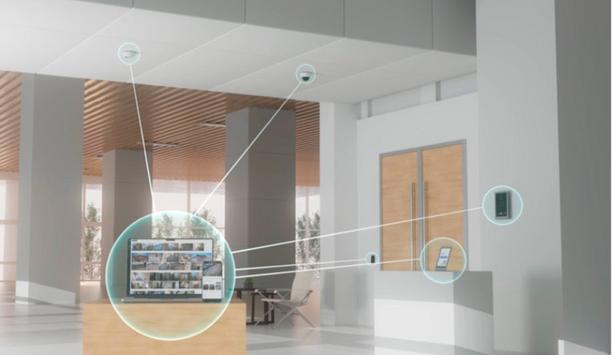
5 ways to strengthen physical security with an integrated system
Download
11 advantages of a combined system for access control and intrusion
Download
Wireless Access Control eBook
Download
Preparing your organisation with quality situational awareness
Download
Cybersecurity for enterprise: The essential guide to protecting your business
Download
How to create a successful physical security roadmap
Download
A guide to moving physical security into the Cloud
Download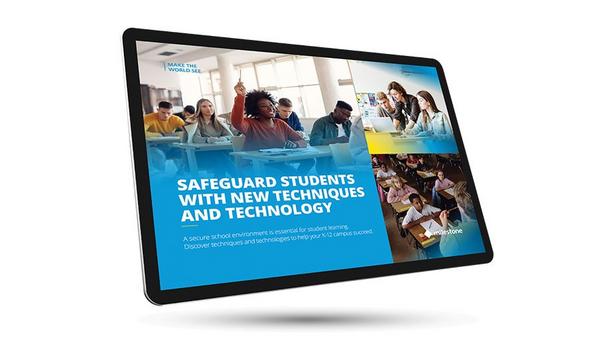
Safeguard Students With New Techniques And Technology
Download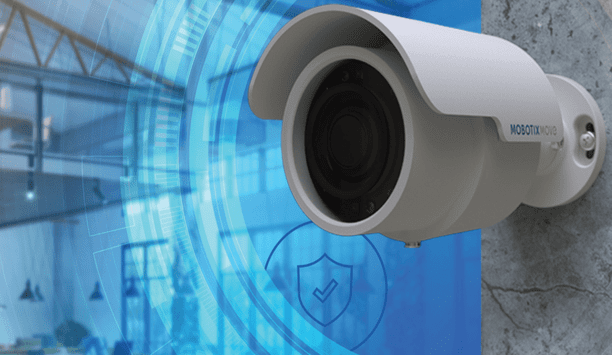
Intelligent video security solutions
Download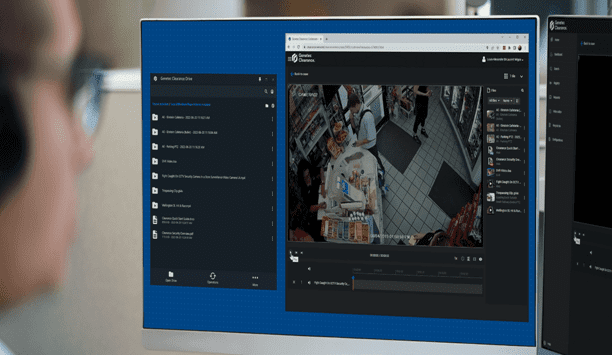
How to implement a physical security strategy with privacy in mind
Download
Access and security in the age of hybrid working
DownloadCybersecurity in keyless access management
Download
Understanding key control systems and best practices
Download
IoT connectivity
Download
Smart surveillance in the workplace
Download
5 ways to strengthen physical security with an integrated system
Download
11 advantages of a combined system for access control and intrusion
Download
Wireless Access Control eBook
Download
Preparing your organisation with quality situational awareness
Download
Cybersecurity for enterprise: The essential guide to protecting your business
Download
How to create a successful physical security roadmap
Download
A guide to moving physical security into the Cloud
Download
Safeguard Students With New Techniques And Technology
Download
Intelligent video security solutions
Download
How to implement a physical security strategy with privacy in mind
Download
Access and security in the age of hybrid working
DownloadCybersecurity in keyless access management
Download

Videos
Security management: Manufacturers & Suppliers
- Dahua Technology Security management
- Vicon Security management
- Seagate Security management
- Bosch Security management
- CEM Security management
- IFS Security management
- VIVOTEK Security management
- Hikvision Security management
- Vanderbilt Security management
- Parabit Security management
- BCDVideo Security management
- Pelco Security management
- ComNet Security management
- AV Costar Security management
- TESA Security management
- Hanwha Vision Security management
- OPTEX Security management
- DSC Security management
- Messoa Security management
- FLIR Systems Security management

Using artificial intelligence (AI) to automate physical security systems
Download
A modern guide to data loss prevention
Download
7 proven solutions for law enforcement key control and asset management
Download
The truth behind 9 mobile access myths
Download
Access control system planning phase 2
Download
